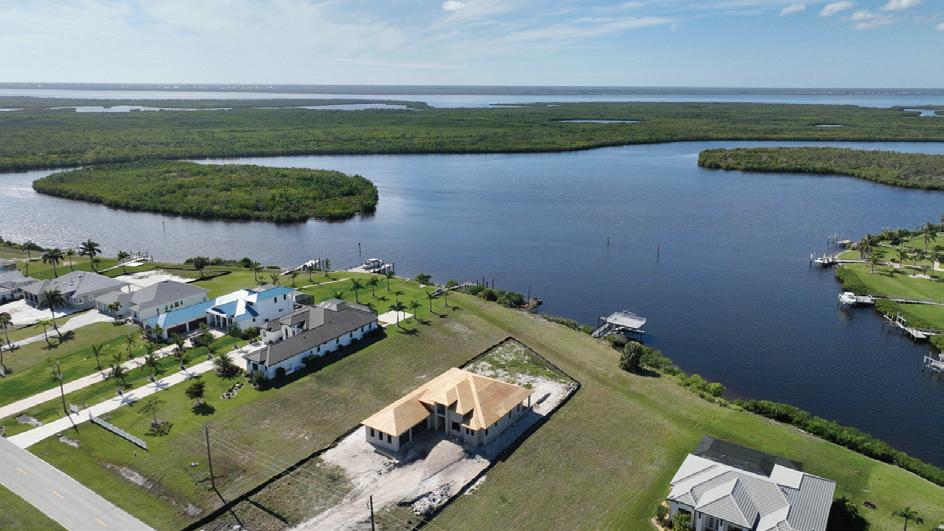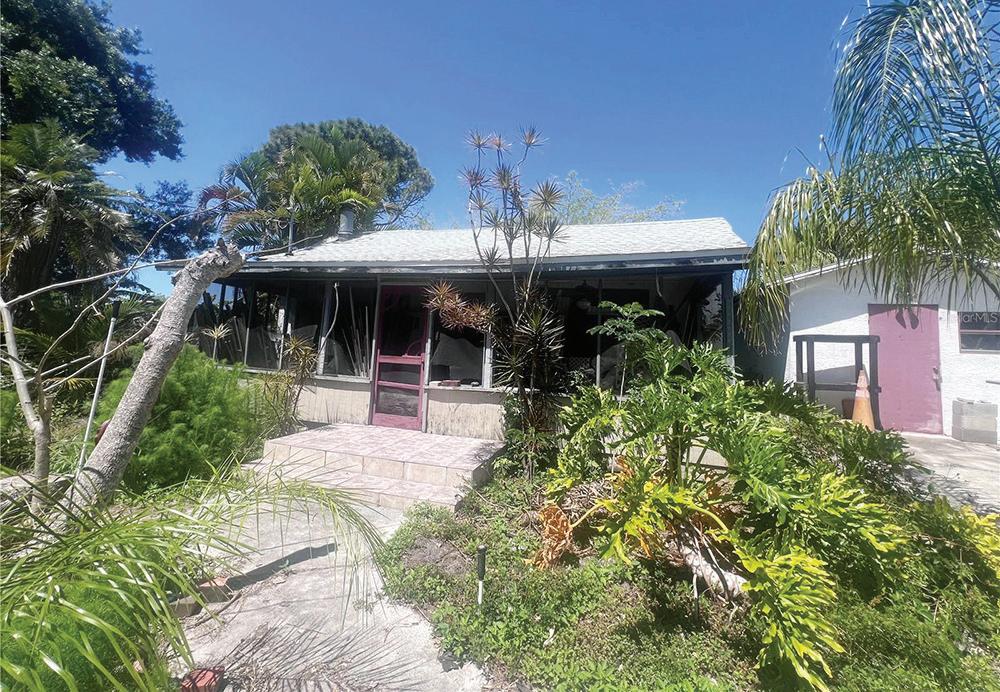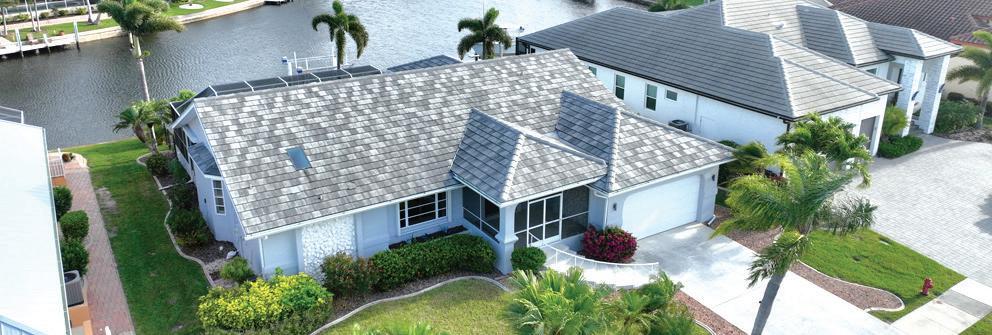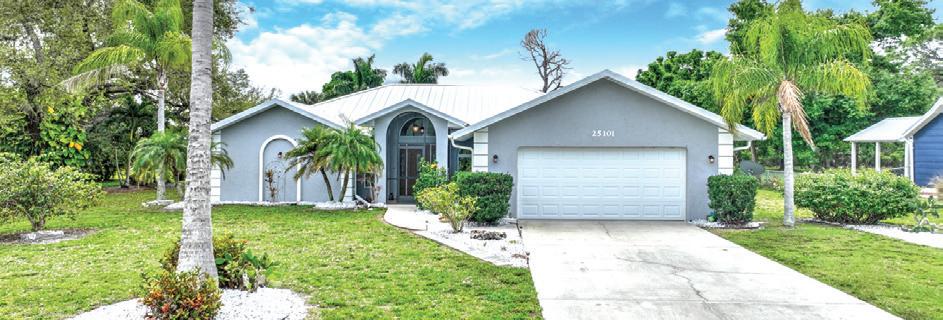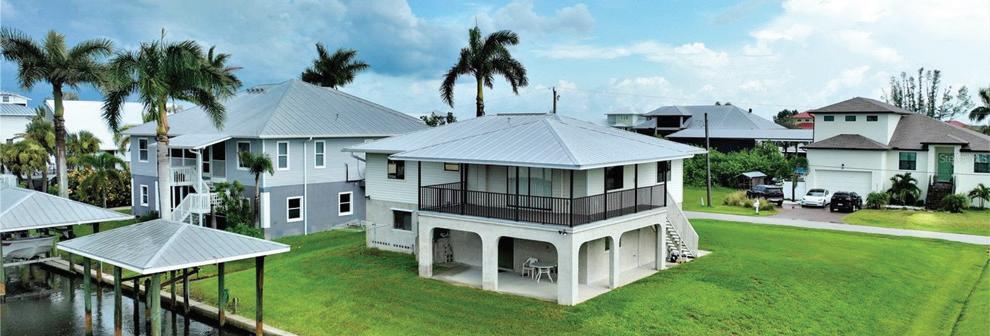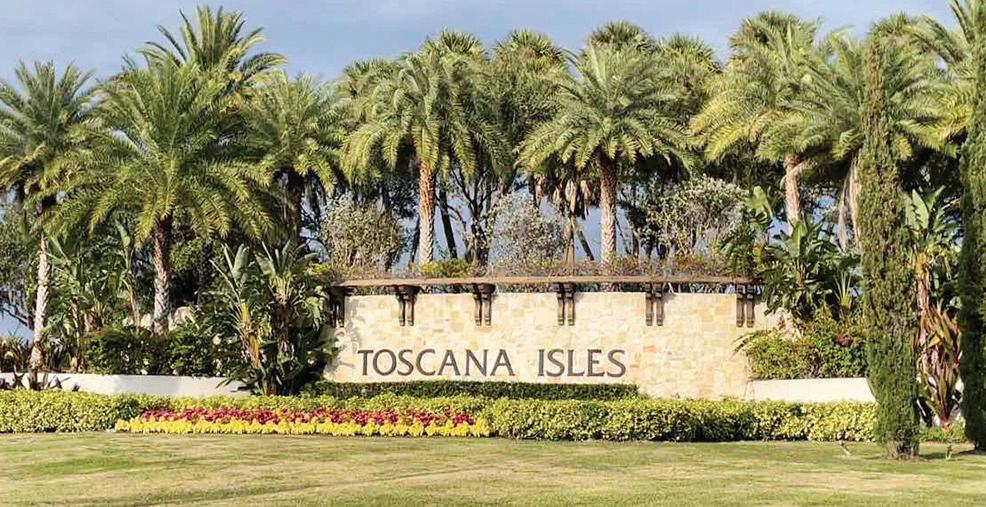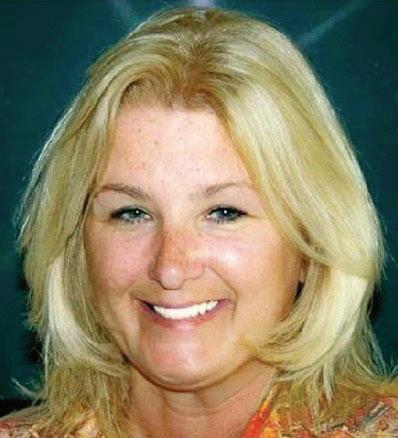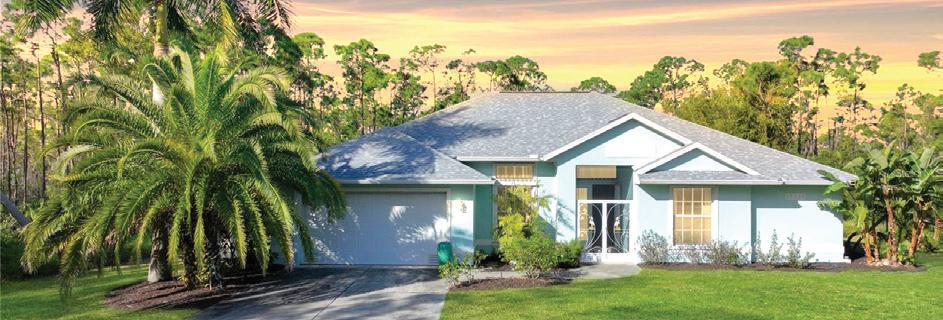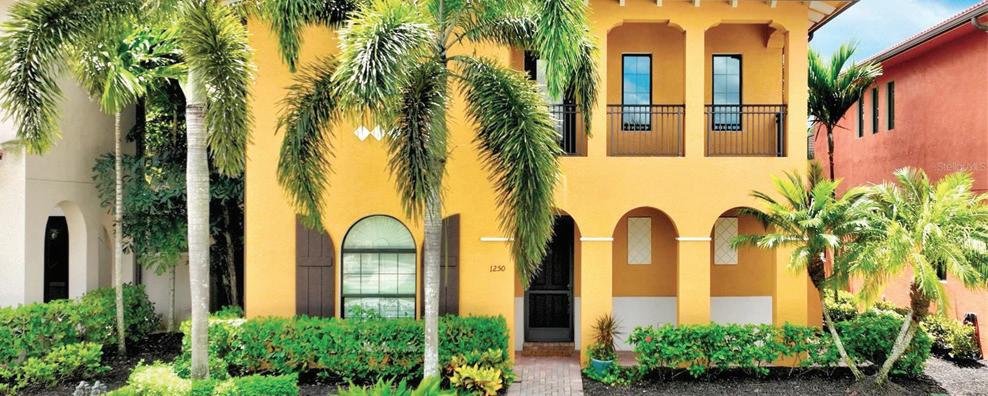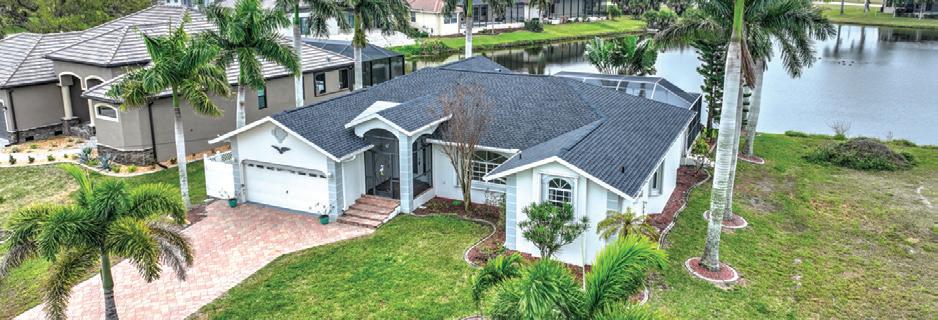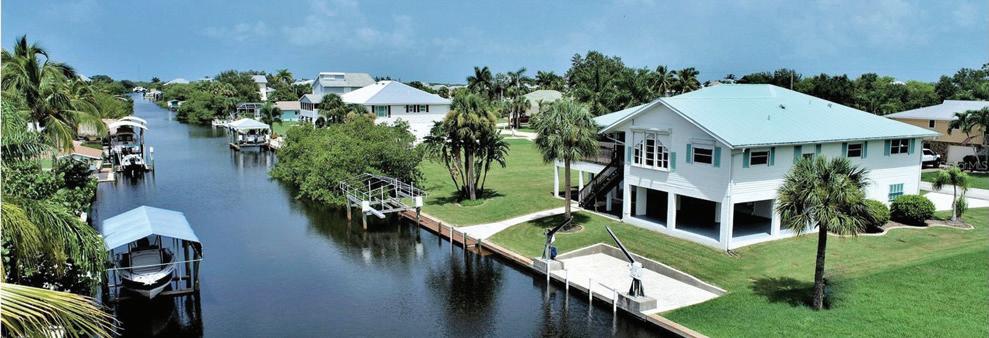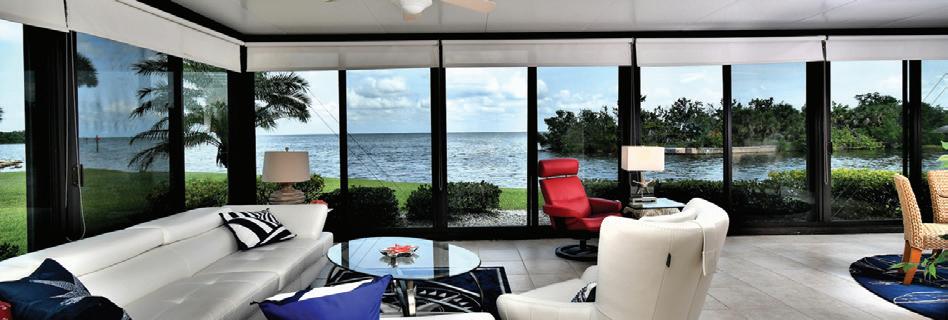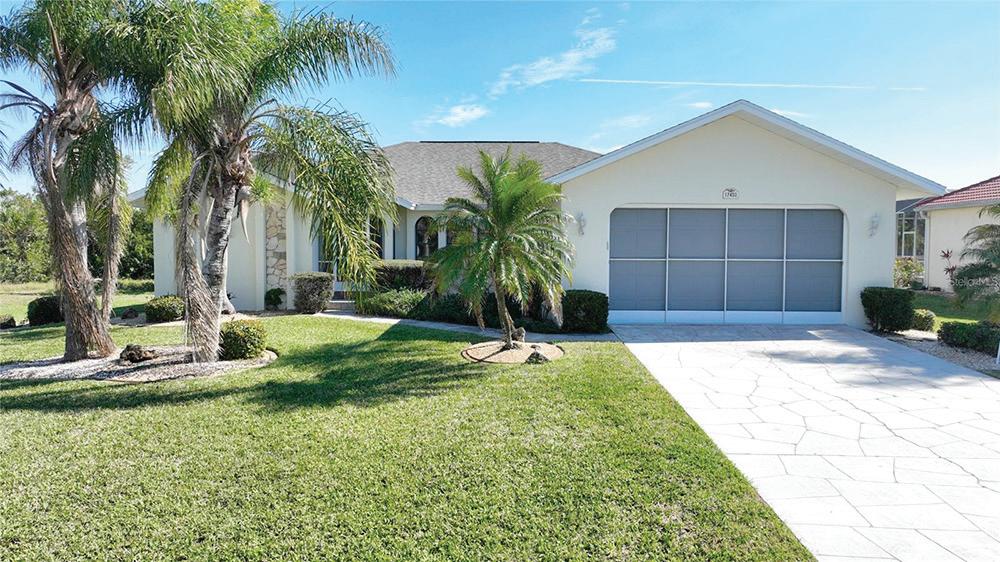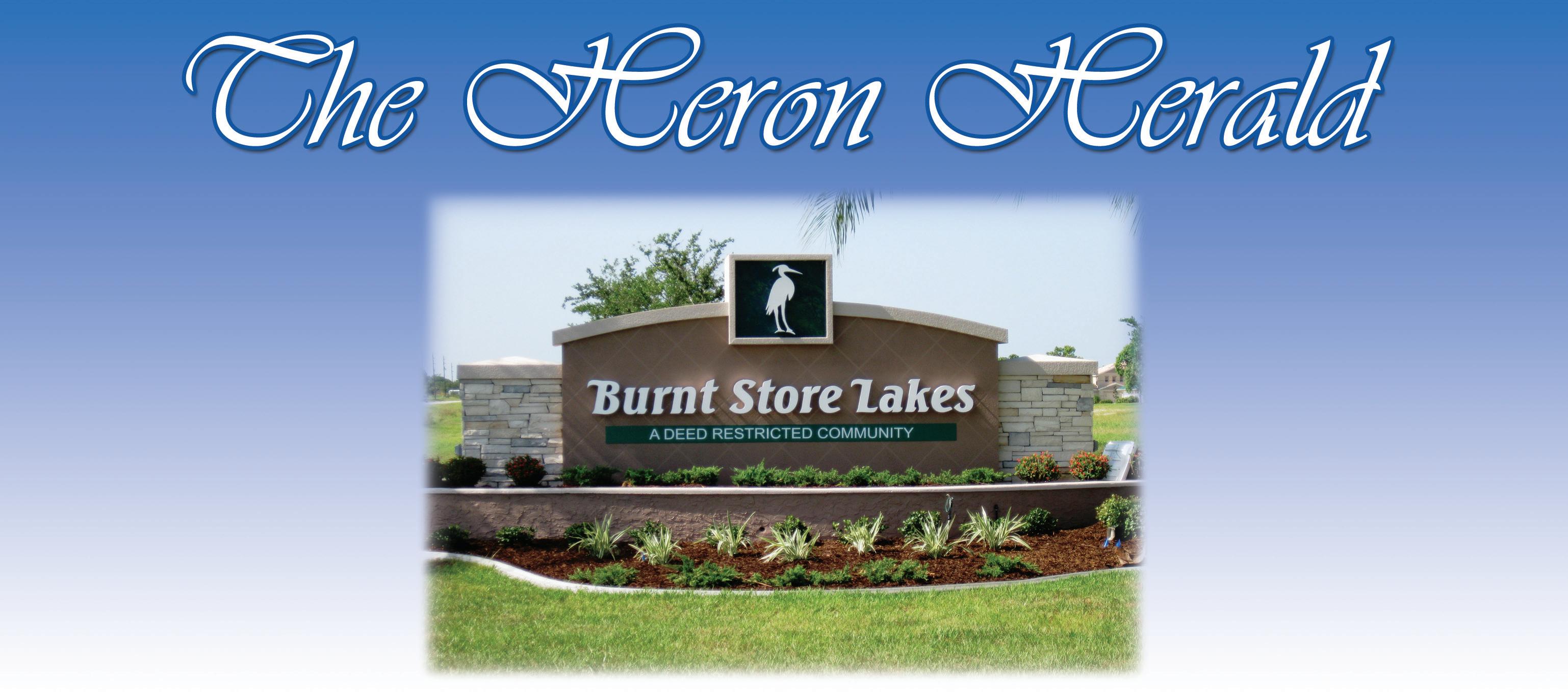

BSL Architectural Review Update

By Betty Ingerson, BSL Board of Directors, ARC Liaison
The architectural projects listed in the following table were either approved or conditionally approved
by the Burnt Store Lakes Board of Directors during the April 2024 Board Meeting.
As of May 1, there were 91 new homes in the construction process. Thirty-six new homes have received Certificates of Occupancy in the current fiscal year (October 2023 to September 2024).
Architectural Review Update on page 2
Charlotte County Fertilizing Rules And Regulations
Please be aware fertilizers containing nitrogen or phosphorous may not be used on residential or commercial turf or landscape plants in Charlotte County between June 1 and Sept. 30.
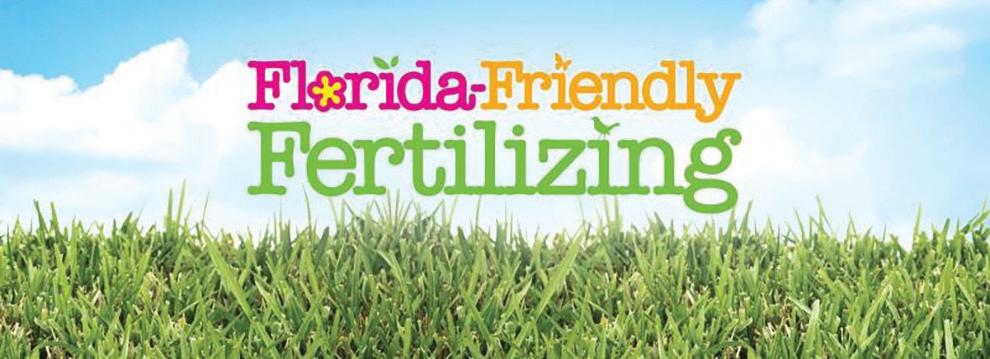
Fishing In Burnt Store Lakes
All BSL residents may walk or fish along the shoreline of the lakes. Those enjoying a stroll or fishing are asked to be respectful of others’ property. Learn where the association’s common property is and how to access the shoreline easily, so you don’t trespass on someone else’s lot. Those fishing should bring their BSL identification card and only walk on association property. If unsure, stop and ask for permission to walk along the shoreline. Always be respectful. Be quiet while strolling or fishing from the shoreline, and make sure you pick up and properly dispose of all garbage.
Residents whose homes are adjacent to the lakes are asked to be respectful of those taking a stroll or fishing from the shoreline. If unsure if someone is a resident, ask them for proof of residency or call the Charlotte County Sheriff’s nonemergency line at (941) 639-2101.
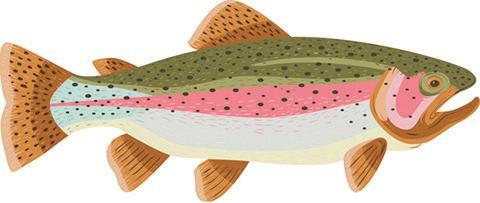

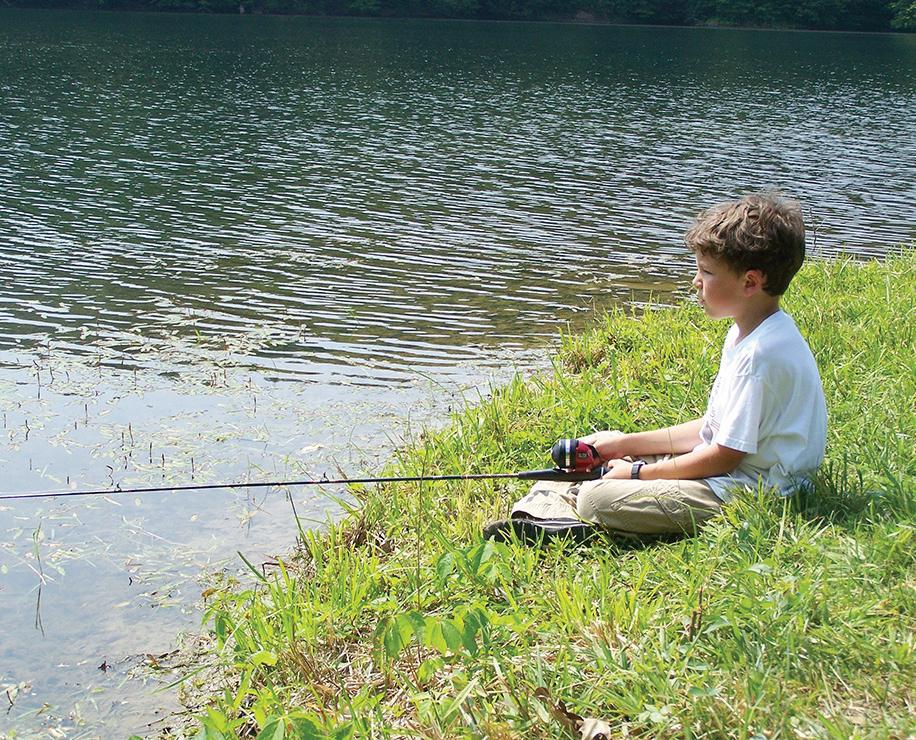
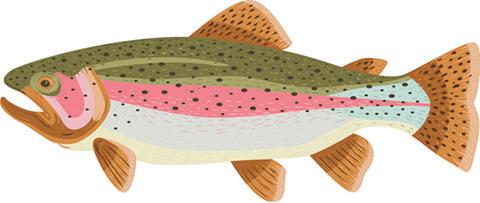


Located off Rio Togas near Burnt Store Road. (Rescheduled from May 12) Sunday, June 9 1 to 3 p.m.
Please bring a meat dish, casserole, side dish and/or a dessert to share with 12 to 15 people and bring your own beverage. Plates, silverware, napkins, and water will be provided. Come for the food and stay for the fellowship and fun! We hope to see EVERYONE there!

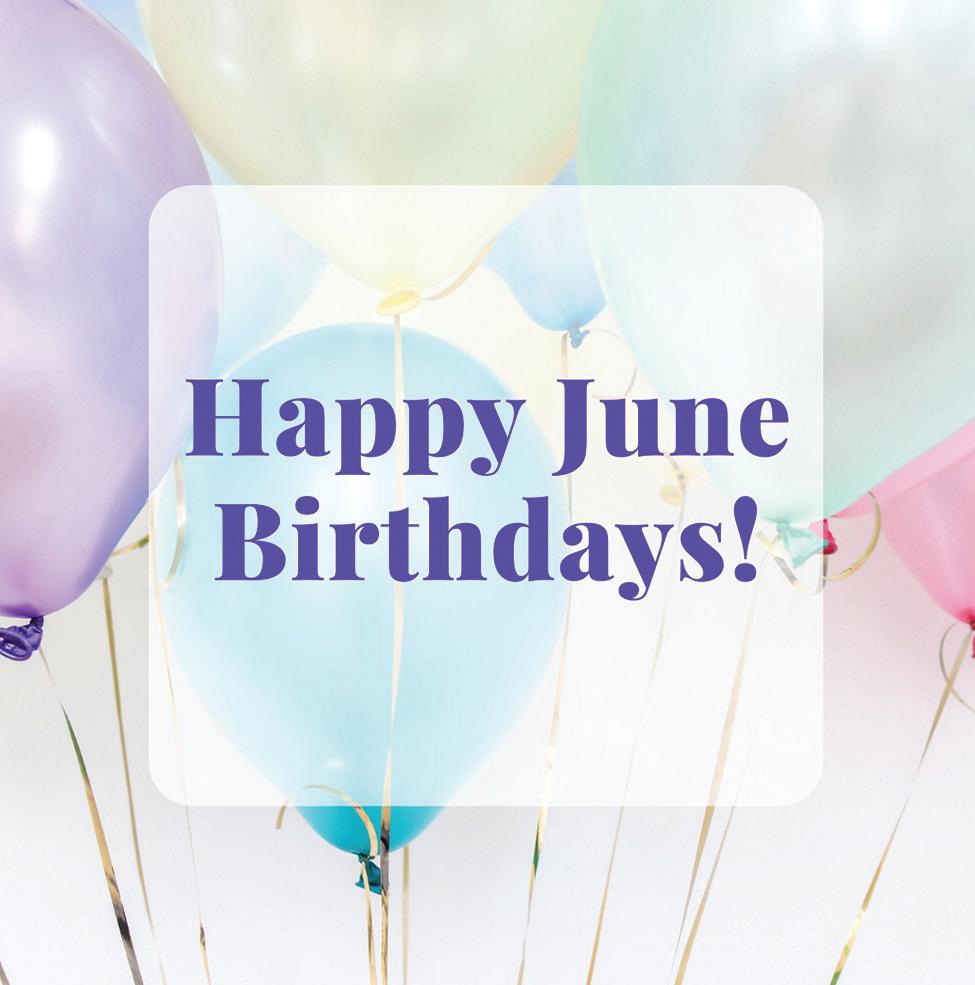

Board Of Directors
Sandy Funk ~ President
Liaison – Long-Range Planning
Thomas Freimark ~ Vice President
Liaison – Beautification and Enhancement
Elisabeth Geltz ~ Secretary
Liaison – Drainage and Swales
David Todd ~ Treasurer
Liaison – Lakes Quality
Richard Hefright ~ Director-At-Large
Liaison – Mechanical and Maintenance
Betty Ingerson ~ Director-At-Large
Liaison – Communications
Liaison – Architectural Review
Richard Mathis ~ Director-At-Large
Liaison – Safety and Preparedness
Board Of Directors
Community Standards
Board of Directors meeting is Saturday, June 15 at 10 a.m. Meetings are hybrid meetings held in the Community Center and available by Zoom.
16500 Burnt Store Road, Suite 102 (941) 639-5881
Quote Of The Month
Never repeat a rumor before you have verified it. And if it is true, hold your tongue all the more.”
~ Nobel Prize Winning Author, Selma Lagerlof ~
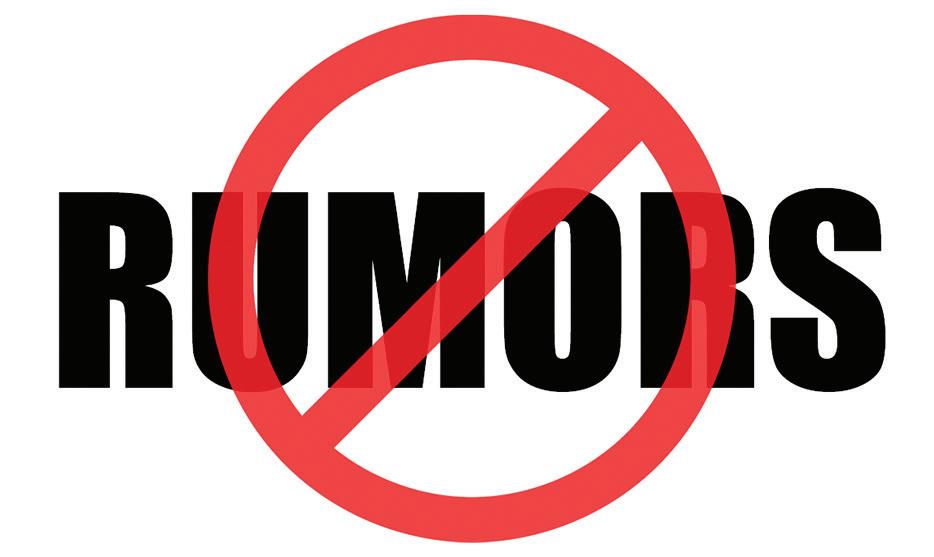

From My Lanai
For over three years I have shared my usually humorous observations as I sit on my tranquil lanai. But that all changed this morning.
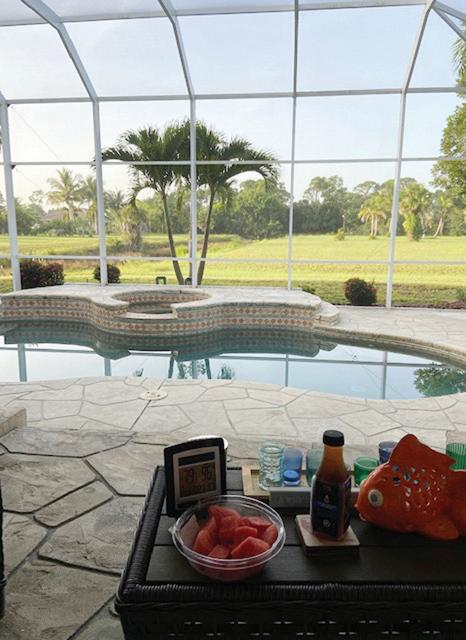
At 7:15 a.m., I was preparing for church and as I walked through my living room heading to the kitchen, I caught sight of a majestic pelican floating in the sky. As I watched, it fluttered to the ground and settled in the grass right outside of my screen door. I was surprised as I had never seen a pelican in the Lakes. I’ve seen them in Charlotte Harbor, in the Marina, and, of course, at the beach. However, not in my backyard. I have nothing to entice such a large bird. The fish offering in my canal is not up to par for such an appetite.
He settled onto the ground and fluffed his large wings around himself, as if nesting. His head came up, and I noted his great bucket of a beak – a beautiful specimen. I felt excited and blessed that this large creature would come so far inland to be my morning perk. As I continued to watch he stilled, and his great head leaned into his chest. Within 10 minutes he ceased to be. He seemed to melt into himself and eventually into the grass, all strength and structure gone. He was dead. I had watched his final landing, his preparation to die, and then, unfortunately, his final breath. I stared and I cried not knowing what to do or what had happened to him.
Architectural Review Update from page 1
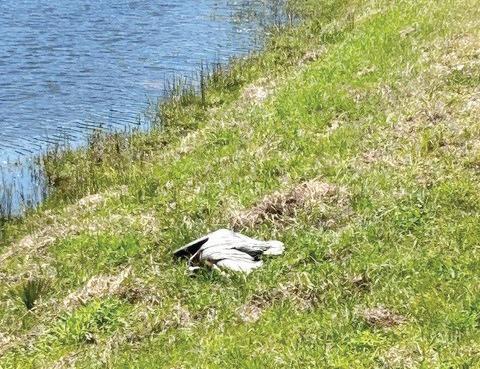
My husband was out of town but would return soon, and so I tried not to look at the carcass. I tried not to think about what I had witnessed.
My poor husband had the duty of taking the large bird away. Its bulk was half the size of my husband’s body. I’ll never know what happened, although I speculated poisoning as there were no marks or damage to the bird. It left me shaken and deeply sad.
This is Florida. Beauty is balanced by harshness, and all in nature struggles to remain stable and in-check. Our blue skies easily turn violent. Our ocean’s waves seek to reclaim the land. Our exotic wildlife intrudes and reminds us that they were here first.
Even so, I am glad to be here, too, as I watch from my lanai.
17347 Cape Horn SPEC HOME: 3,292 Sq Ft (2,361 AC). “The Oakmont.” 4 bedrooms, 2-1/2 baths, paver driveway, and 3 car garage by Lennar Homes. Tile roof: Weathered Ash. Home: Loggia. Trim color: Classic Shoji White. No pool.
17355 Cape Horn SPEC HOME: 3,296 Sq Ft (2,444 AC). “The Summerville.” 3 bedrooms, 3 baths, den, paver driveway, and 3 car garage by Lennar Homes. Tile roof: Weathered Ash. Home: Uncertain Gray. Trim: Evening Shadow. No pool.
24324 Nicobar SPEC HOME: 3,292 Sq Ft (2,361 AC). “The Oakmont.” 4 bedrooms, 2-1/2 baths, paver driveway, and 3 car garage by Lennar Homes. Tile roof: Weathered Ash. Home: Chelsea Gray. Trim: Classic Light Bluff. No pool.
24327 Saragossa HOME: 3,417 Sq Ft (2,529 AC). 4 bedrooms, 3 baths, den, 2 car garage, concrete driveway, metal roof, Lake Source irrigation, and pool by Gulf Home Builders. Home: Ashen. Trim: Oatmeal. Metal roof: Brown (SRI .38).
17456 Belie
17447 Belie
SPEC HOME: 3,045 Sq Ft, (2,093 AC), 4 bedrooms, 3 baths, 3 car garage, paver driveway by Central Construction Group, LLC. Metal roof: Ash Gray. House: Loggia. Trim: White Sand. No pool.
SPEC HOME: 3,045 Sq Ft, (2,093 AC), 4 bedrooms, 4 baths, 3 car garage, paver driveway by Central Construction Group, LLC. Metal roof: Slate Gray. House: Kind Green. Trim: Tricorn Black. No pool. Note: different elevation than 94002.
24276 Peppercorn SPEC HOME: 2,859 Sq Ft (2,042 AC). 3 bedrooms, 2 baths, flex room, 2 car garage with work area, concrete driveway by Carpenter Homes. Tile roof: Royal Palm or Light Gray Range (either is acceptable). House: Cool Sky. Trim: Melting Glacier. Door and garage door color: Trisha’s Eyes. No pool.
OTHER CONSTRUCTION
17387 Cape Horn DRIVEWAY CHANGE: Recoat existing concrete driveway by removing paint and recoating with different material.
24496 Peppercorn FENCE: Black aluminum 2-rail pool code fence with 2 gates as barrier to meet pool code compliance. 167 linear ft x 4 ft high.
16738 San Edmundo ENCLOSURE SHELD: 7 ft x 14 ft x 7 ft, 6 ft high white vinyl enclosure shield with 2 gates for pool equipment.
17290 Sagehorn PATIO EXPANSION: Extend existing patio by 13 ft long x 40 ft wide x 10 ft long with pavers by Advanced Pavers Corp.
16685 Acapulco PATIO & CAGE EXPANSION: Approximately 15 ft x 24 ft concrete patio/cage extension from existing pool/cage by American Property Maintenance.
17424 Muscat POOL AND LANAI CAGE: 12 ft x 23 ft left side by 52 ft wide x 20 ft right side pool/ lanai cage by JTS Custom Pools.
17038 Alpenhorn POOL AND LANAI CAGE: 20 ft x 57 ft by 20 ft pool with bronze lanai cage and two doors by JTS Custom Pools. This is a new home currently under construction.
24107 Cedar Rapids EXTERIOR PAINT AND TRIM: Repaint house from tan with white trim to Song Thrush with white trim by Jason Hartzel.
24319 Contra Costa EXTERIOR PAINT AND TRIM: Repaint house from cream with tan trim to Dove with Wild Truffle trim by Cape Signature Homes.
16373 Cape Horn
17156 Cape Horn
24496 Peppercorn
17474 Huancay
17291 Carroway
ROOF: Tile-to-Tile, Color Westlake Paradise Island Tan by Green Coast Exteriors.
ROOF: Tile-to-Tile, Color Westlake Paradise Island Tan by Green Coast Exteriors.
ROOF: Tile-to-Tile, Color Westlake Barbados Blend by Green Coast Exteriors.
SHORLINE EROSION CONTROL: Restore shoreline from erosion 6 to 12 feet with riprap by Beautiful Boundaries.
LAKE SOURCE IRRIGATION: Well installation for irrigation by Shaffer’s Irrigation. This is a new Home.
Ava Ritter
Dear friend,
“I Just Don’t Believe That…”
When I meet people in town, they usually say, “Oh, yeah, I know you, you’re that doctor with the beard on TV.” Well, perhaps I should tell you a little more about myself, the picture from television and why I use it in my ads.
Let’s start with me, the guy with the beard. Ten years ago I was living here in Florida. At that time my mother was down visiting from New Jersey for the season when she showed up in my clinic with a frozen shoulder. She was desperate and in pain having lost practically all use of her dominant arm. She could hardly fix her hair, reach for a coffee cup or even fasten her brassiere. Basic hygiene had become extremely difficult for her. She was afraid, because the two orthopedic surgeons that she had consulted told her, “Your only option is to have your shoulder replaced.” I remember saying to my mother, “I just don’t believe that.”
Now at that time I was a chiropractor who worked primarily on the spine. Frankly… I didn’t know how I was going to help her. I just knew there was a nonsurgical solution out there and I was going to find it.
And boy did I find it! I found the answer to my mother’s shoulder problem and much, much more. And where did I find it? Of all places, I found it at the birthplace of Elvis Presley, Tupelo, Mississippi. Immediately I hopped on a plane and flew into Memphis, rented a car and drove out to a chiropractic neurologist who was willing to teach me how to fix my mother’s frozen shoulder. I spent three days in his clinic shadowing him, learning a new technique I had never even heard about before. Eager to help my mother, I developed this new skill set quickly. When I returned to Florida I wanted to be able to immediately fix my mother’s shoulder.
And that’s exactly what happened. After I performed the first Non-Surgical Operation on her shoulder, her pain went away significantly and she recovered to nearly full range of motion. She was so happy that she avoided surgery and got her life back.
It’s strange how life is, because that same doctor who showed me how to fix my mother’s shoulder opened up his treasure chest of knowledge and showed me how to help people with chronic knee, neck, low back pain and those suffering with neuropathy in their hands and feet, all without the use of Drugs, Surgery or Injections.
I spent the next several months flying back and forth to Mississippi learning all that I could.
Many years later we now have over one thousand successful patient testimonials. Many of them were told by their doctors that their only option was to have their knee or shoulder replaced or to take toxic drugs for the rest of their lives to mask their neuropathy symptoms.
Al was one of those patients who was told he had ‘bone on bone’ degeneration. His knee stopped unlocking properly, similar to what I’m describing in the photo, and he was facing knee replacement surgery. He was suffering from chronic degenerative knee pain, couldn’t walk properly and was easily holding onto 60 pounds of excess body weight. His doctors would have eagerly scheduled him for a knee replacement surgery had he decided to go in that direction.
Immediately after the Non-Surgical Operation I performed on Al’s knee, he was squatting and walking up and down the stairs normally without pain.
Al is now in his early 70s touring Alaska in his RV. He has dropped over 60 pounds and is biking 15 - 20 miles per day and loving life. He regularly sends me great pictures from his adventures.
Joyce was told by her oncologist, “There’s nothing that can be done.” She would have to live with the chemo-induced neuropathy in her hands and feet. Hot and cold were indistinguishable and the numbness and tingling made it impossible for her to walk any distance.
Joyce was a cancer survivor only to have come out on the other side with another debilitating condition. She and her husband showed up in my clinic and told me what their medical doctor had said. I told her the same thing I told my mother, “I just don’t believe that.”
After a thorough neurological examination and report of findings she trusted me enough to follow my protocols. Within two weeks her numbness and tingling in her feet subsided and the feeling was coming back.. After 12 weeks she was feeling the sand between her toes as she walked along the beach again. At her one year checkup Joyce’s sensory loss had improved over 80% overall to within the normal range… She is all smiles these days!
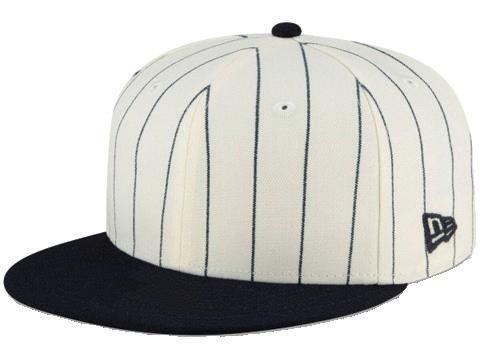
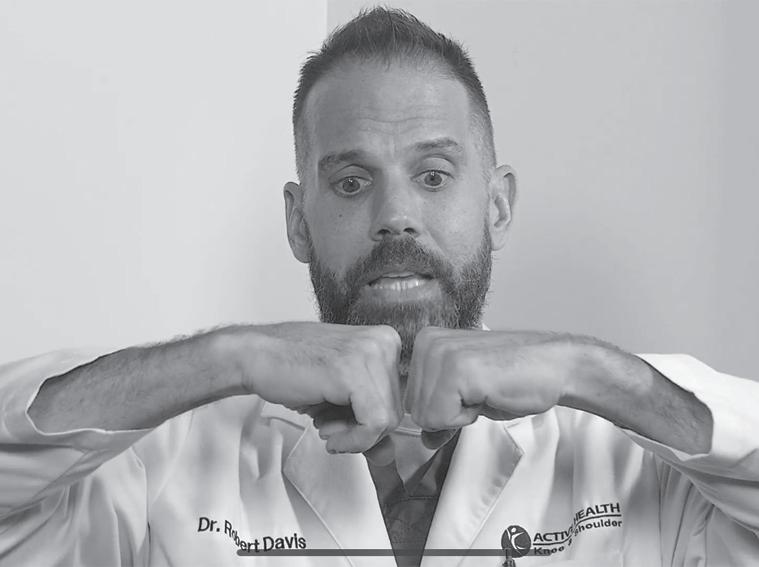
You should know that I don’t heal anyone of anything. What I do is perform a specific non-surgical operation that resets the communication between the brain and knee or shoulder, instantly decreasing pain and inflammation, increasing strength and flexibility and helping with tissue healing. For our neuropathy patients we have a 4 step, proven approach that heals your nerves and reverses your symptoms. We get tremendous results. It’s as simple as that! –We get tremendous results. It’s as simple as that!
Today in the United States medical doctors are prescribing more drugs than ever before. These drugs are designed to cover up symptoms as your condition gets worse underneath the surface. The toxicity from the daily use of these chemicals ultimately leads to nasty side-effects and more drugs to treat the new symptoms. The current “healthcare” system was built to maintain your condition, not fix it. It’s a brilliant business model for the pharmaceutical industry and the hospitals, but a horrible strategy to follow if one is looking to age gracefully.
That’s where my practice comes in. I have found a way so that more people are able to afford the treatment they need, even those on a fixed income with or without health insurance coverage. One Non-Surgical Operation in my clinic could cost what you’d pay for just the deductible of a joint replacement surgery.
You Benefit from a Unique Offer…When you bring in this article, you will receive a FREE CONSULTATION with me to determine whether you are a good candidate for our Non-Surgical Knee or Shoulder Operation. If you’re being seen for Neuropathy we will take a thermal image of your feet at no charge to you. This will give me enough information to know whether I can help you. Once we determine you’re a good candidate and you feel comfortable in my clinic the complete examination is only $197. That’s it, for the entire neurological examination & report of findings. This examination & report could cost you over $500 elsewhere. But, please
call right away because this offer expires on June 30, 2024, and I don’t want you to miss out. By the way, further care is very affordable and you’ll be happy to know that the non-surgical, drug free therapies and procedures performed in my clinic can cost as little as $300 per month. You see, I’m not trying to seduce you to come see me with this low start up fee, then to only make it up with high fees after that. Further care is very important to consider when making your choice of doctor because higher costs can add up very quickly.
“You shouldn’t be forced to choose drugs and surgery just because that’s the only treatment medicare and your insurance company will cover.”
You should know a little about my qualifications. That’s important so that there’s no misunderstanding about the quality of care. I’m the bestselling author of Breaking The Cycle - how to take control of your life when traditional medicine has failed. An amazon #1 new release in three categories. I’m a graduate of Life University School of Chiropractic practicing since 1998. I am a licensed chiropractic physician certified in functional neurology. I’ve been entrusted to take care of avid morning walkers, pro-athletes and business tycoons you may have heard of.
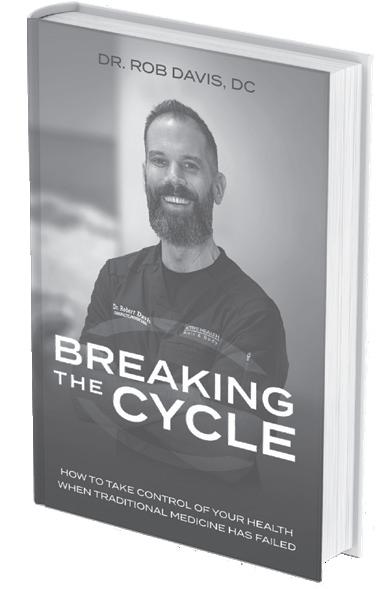
My office is called Active Health Brain & Body and it is located at 6710 Winkler Road, Suite #1. It’s the gray Key West-style building at the corner of Cypress Lake Drive and Winkler Road behind the Bank of America. The phone number is 239-482-8686. Please call my wonderful assistants Megan or Silvia today to make an appointment.
I wish you the Very Best in Health and Life!
Dr. Rob Davis, DC
P.S. When accompanied by the first, I am also offering the second family member this same examination for only $97.
P.P.S. Your time is as valuable to you as mine is to me. That’s why I have a “no wait” policy. It is highly unusual to wait more than a few minutes in my office.
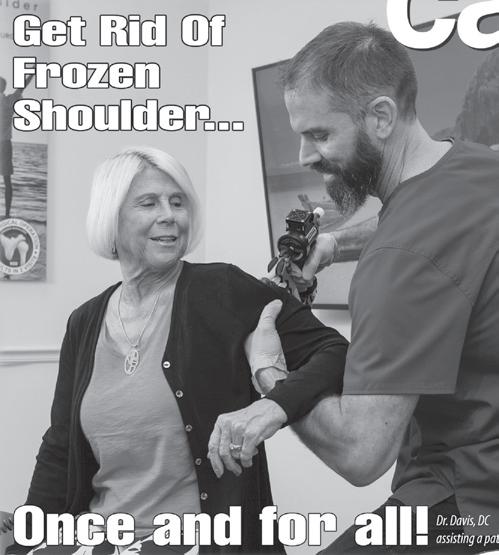
his story of how he avoided a total knee replacement surgery.
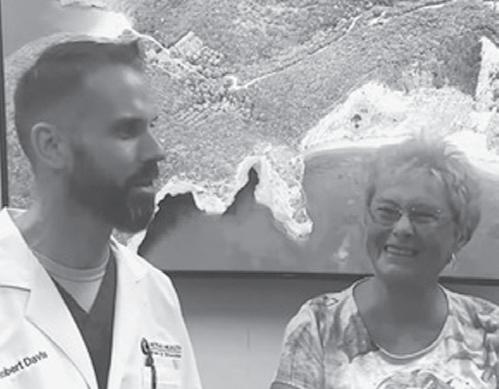
My mother and I featured in a local publication for nonsurgical shoulder solutions.
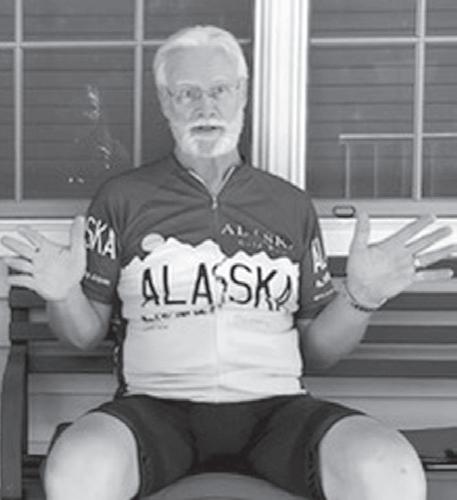
Joyce is all smiles at her one year checkup. No more neuropathy!
Snakes – Oh, No
– They Bite People – They Are Bad – Kill It!
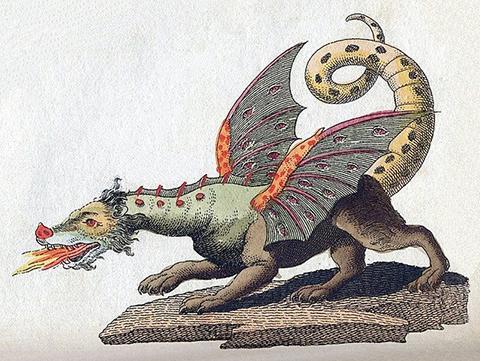
I understand why people are afraid or terrified of snakes. To many, they look evil, probably based on drawings of snakes or serpents devouring young children that were in some books of old. However, by eating mice and rodents that can spread disease, they do a lot of good.
Most people I talk to have never seen a venomous snake in their yards, one in nature, or birding hike in the woods. Being a nature guy, I am in the woods quite a bit. In my 27 years in Florida, I can count on one hand the number of venomous snakes seen in the wild. I have never seen one in my yard but see black racers quite often. They are welcome because they eat the fruit rats eating my mangos. I have seen one Eastern diamondback rattlesnake during my 17 years in Punta Gorda, but I have never seen one when looking for them to photograph.
Snakes are carnivorous and only eat a few times per week. Again, they primarily eat rodents and reptiles. They also will eat bird eggs on occasion. They hunt by using their tongue for smell and eyes for vision. Some snakes, outside the USA, are pit vipers and have sensors around their mouths to help locate prey. Snakes need to keep warm by using the sunlight to thermoregulate.

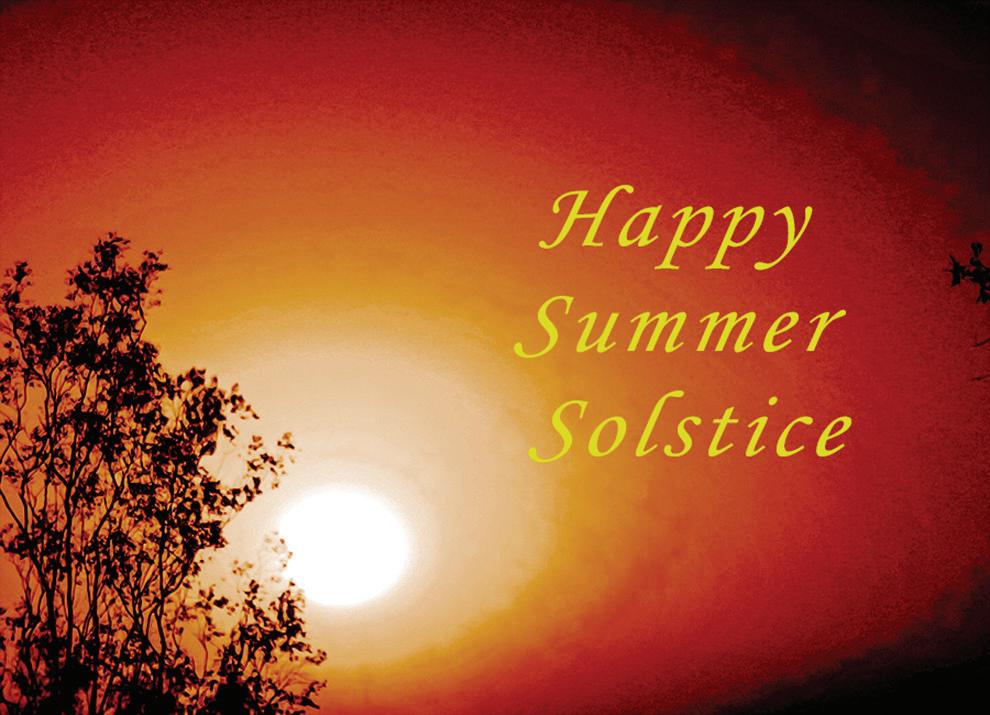
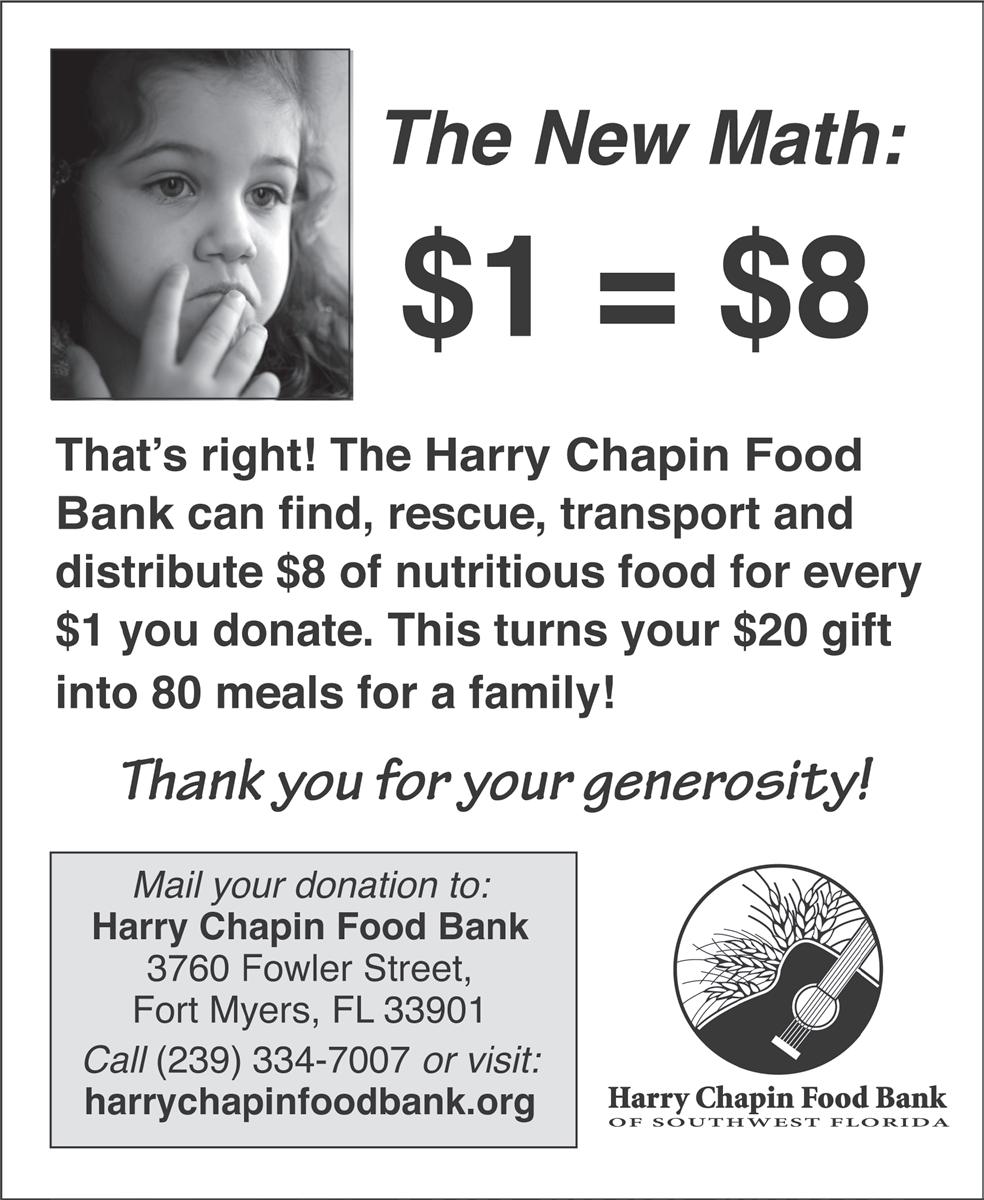
The females lay about 10-plus eggs in the spring and never tend to them. The babies have an egg tooth just like birds to help the youngsters crack the soft leatherlike eggs and are then on their own. Our herons keep the population in check by eating the babies before they get street smarts.
They shed their skin several times per year, which allows them to grow bigger. I find their shedded skins around some of my shrubs, so I know they are there.
All our snakes will do their darndest to get away from you, except for the cottonmouth, which tends to be aggressive. I have only seen one, and that was when I lived in Orlando.
Non-Venomous Snakes – Frequently Seen In This Order
▪ Black racer: If you have seen one, you know where it got its name. They are very black and slim and move very fast when trying to get away from you.
▪ Ring-necked snake: It tends to be very shy and hides under logs. It has a yellowish ring around its neck.
▪ Corn snake: It is out in the open a lot. I have helped neighbors get them out of their pool cages on occasion. (See photo.)
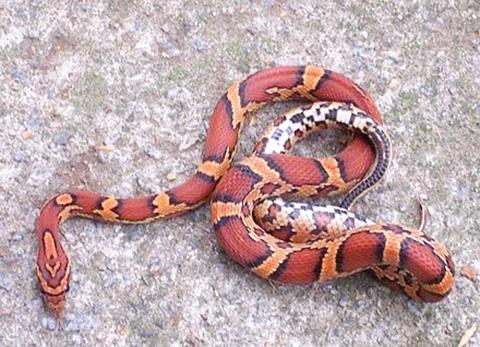
▪ Indigo snake: This snake is on the endangered list. They look like a longer and fatter Black racer, and I have only seen one in my lifetime.
▪ Pine snakes, water snakes, rat snakes, and so forth are rarely seen.
Venomous Snakes – Please Do Not Try To Handle Them
▪ Eastern diamondback snake: Of all the venomous snakes
in our area, it is most often seen. They can grow quite large and should not be chased. Since living in Punta Gorda, I have only seen one alive but do see the ones that have been run over by a car – like the one in my picture.
▪ Cottonmouth: It’s most often seen near swamps and wetlands. I saw one in Orlando when back road bike riding.
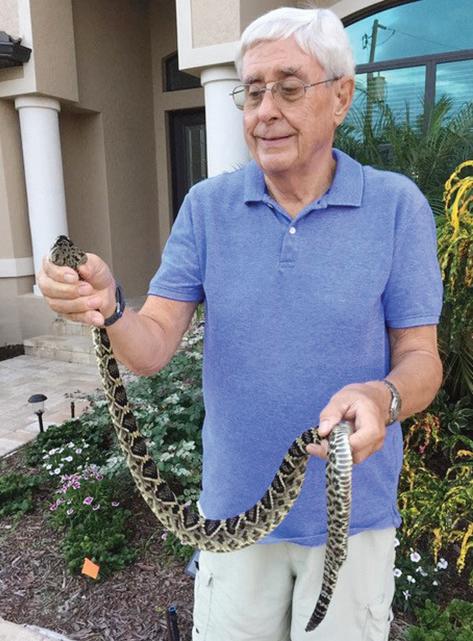
▪ Pigmy rattle snake: A smaller version of the Eastern diamondback, it’s darker and tends to be around logs in the woods. To date, I have never seen a live one in the woods.
▪ Coral snake: It’s red, black and yellow, with red touching yellow and a venomous black head. Scarlet snakes and milk snakes are both a bit more colorful but are not venomous. The red band does not touch the yellow band. It’s best just not to guess on this one. Leave it alone. I have never seen one in the wild.
In all cases, if you see a venomous snake in the wild just turn around and go the other way. I have been trained how to handle these venomous snakes, and I still turn around or wait for it to go away. Do remember that the snakes do us good by eating rodents that could make us very sick.
I do know a few snake handlers, herpetologists, who go out looking for snakes in all places and at all times of the day. Some go after the invasive pythons at night.
I’m glad that someone is willing to do that. In the meantime, I will just go birding or fishing.
Good Neighbor Program
Let us know if you would like to be connected with a neighbor. Neighborhood Watch is accepting resident profiles as a community service for those who may need assistance from time to time, particularly in the event of a severe storm or hurricane.
To obtain a copy of the profile and/or to obtain additional information, contact Louise Barrett at (508) 728-8002 or at lbarrett10@comcast.net. The BSL website (bslpoa.org) also has the profile forms and information available.
Furthermore, you can register online at the State of Florida Special Needs registry for “special
Bill Kimber, Florida Master Naturalist
needs” status if you have a physical, mental, or sensory disability and require assistance during an emergency. Charlotte County Emergency Management, along with the Florida Department of Health in Charlotte County, will strive to provide special needs sheltering and/or transportation to a general shelter.

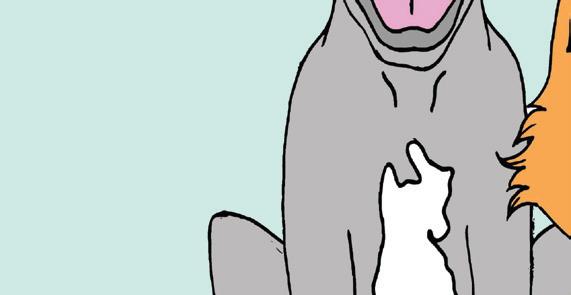
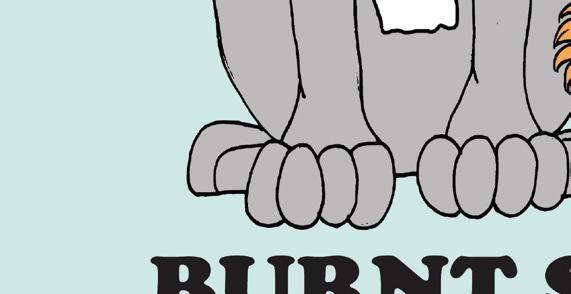

Mary Ellen Kiss


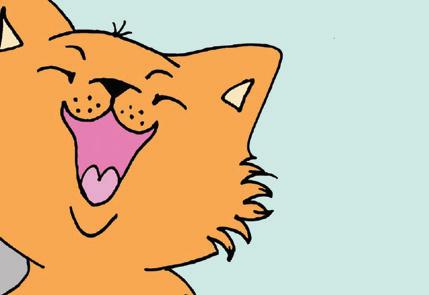
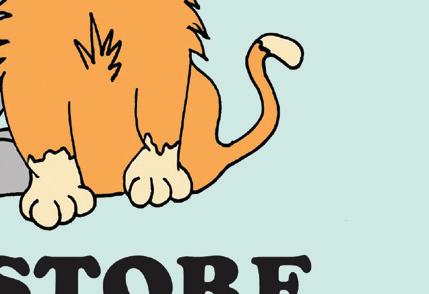

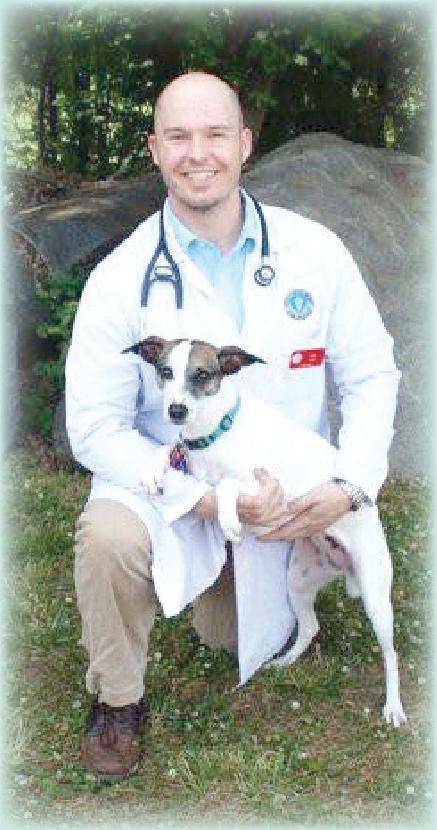
It Was A Nice Idea!
Chapter 11 – Eating Out And Cooking
When I was a kid, I ate what mom put in front of me. Sticky spaghetti with the sauce on the side, boxed mac and cheese, Hamburger Helper and canned chicken ala king. No offense to mom (who has actually been insulted after reading some of my articles), but there was nothing fancy. I didn’t even know there were fancy foods! But all was good. I was extremely skinny though … hmmmm. Anyway … when I was a waiter in the’80s, I learned what really fine food was – rack of lamb with a mint rosemary sauce, chicken charlemagne, and porterhouse steak. Wow! I started seeking out great restaurants and trying a lot of new things. I had no idea there was any other lettuce than iceberg – arugula, butter lettuce, mache, and romaine –and different kinds of fish other than frozen fish sticks. I started cooking, too, after learning all the options out there. I mentioned in Chapter 2 about Ina Garten. She really is my favorite, and I learned a lot from her. I made a lot of mistakes, but that’s how you learn. Once I made a dinner for guests and forgot to put the potatoes in the oven. Do you know what happens to hard-boiled eggs if you forget to turn off the stove and the water boils away? They explode! Um, a friend told me that … yeah, a friend. Did you ever forget to put in that one small teaspoon of baking powder in a cake? You end up with a huge flat cookie. I guess baking powder really is important after all. Who knew?
There are many great restaurants here in Punta Gorda, but here are a few hints I’ve learned along the way for entertaining people at home.
Caught On Camera
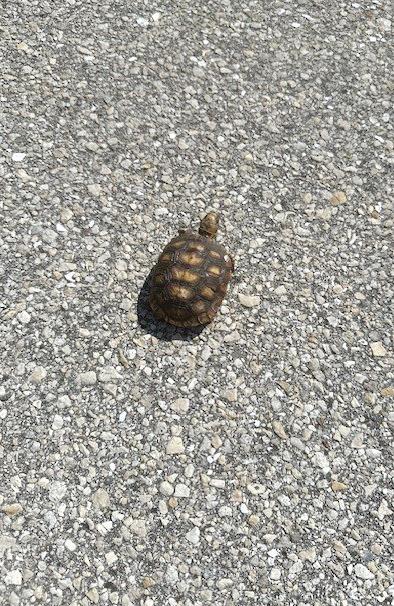
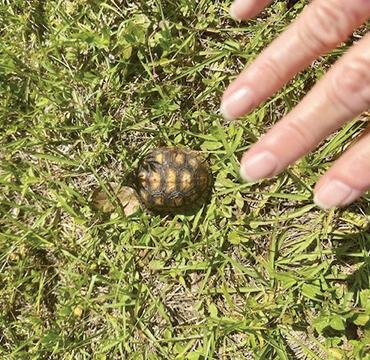




1. There are some really nice-looking plastic plates and silverware that look like silverware. Set the table with those. It sounds cheesy, but people actually compliment you on your find and you save on cleanup!

2. Use cloth napkins. You can watch YouTube on how to fold them, and you just wash them. Are you getting impressed with me yet?
3. Don’t sauté dinner. You have to watch over it. Grill or bake. Bake a pork loin with some veggies or grill some steaks. Bake potatoes so you don’t have to watch them, and you can enjoy your guests.
4. Serve only a few hors d’oeuvres – one made by you and a few store bought. Too many and your guests will be full. For pre-dinner snacks, figure two per person. For just cocktails, figure eight per person (hors d’oeuvres I mean!)
5. No one will have less of a good time if you buy the dessert. Making it can be fun, but don’t stress.
I love life down here in Burnt Store Lakes. Finding new ways to step it up a notch is a continuing goal for me as I think of other nice ideas! P.S. I wrote this article while submerged in the pool with a glass of Chardonnay! (Pause for people to laugh.)
And remember, drop me a line at itwasaniceidea@ gmail.com. I love hearing from you, and I need the encouragement!
Stay tuned for Chapter 12: The End. My Final Chapter.
By Matthew Szuchy, Itwasaniceidea@gmail.com
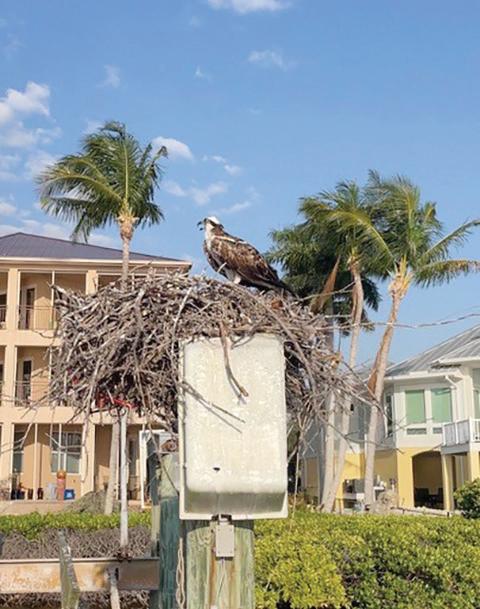
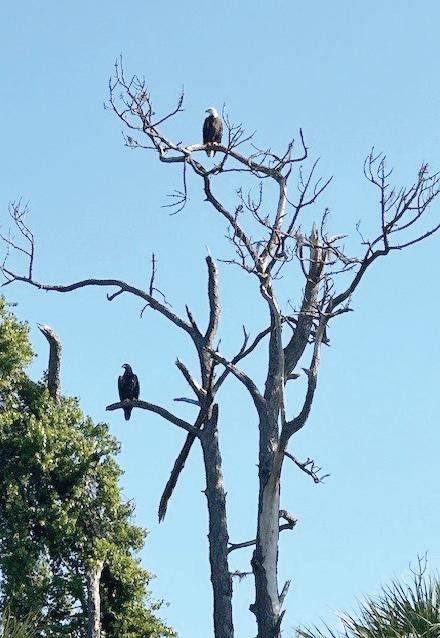
If you know how to tell time, you probably understand and use a.m. and p.m., and you might even know the terms come from Latin phrases. But do you know what exactly those phrases are or what they mean in English? What Do A.M. And P.M. Mean?
According to Dictionary.com, a.m stands for the Latin phrase ante merīdiem, which translates to “before midday.” The term p.m , on the other hand, is an abbreviation of post merīdiem, or “after midday.” Have you ever noticed somebody write “12 m.” or “12:00 m.”? Though uncommon, it’s technically the correct way to express noon. (Noon, by the way, actually used to refer to 3 p.m.)
As with many modern-day practices with Latin roots, the idea of splitting the day into two 12-hour chunks is very, very old. So old, in fact, that we don’t know exactly how it became a worldwide habit. Its history dates back to ancient Egypt and Mesopotamia at the very least. How Should You Write A.M. And P.M.?
If you’re writing a.m. or p.m. in anything formal – an academic paper or published article, for example – you should stick to lowercase letters and include the periods, like we’ve done throughout this piece. But as Dictionary. com notes, it is acceptable to use “am/pm” or “AM/PM” elsewhere, as long as you keep it consistent. Are There Other Ways To Say A.M. And P.M.?
If saying “a.m.” or “p.m.” is getting a little boring, there is slang from the 1910s to which you can turn. Early 20th-century telephone operators used pip emma to signal p.m., and ack emma to signal a.m.; so, if someone said they planned to catch the train at seven o’clock pip emma, they meant 7 p.m. Eventually, both phrases (which, according to Green’s Dictionary of Slang, originated with the military) entered the public lexicon as alternatives to afternoon and morning.
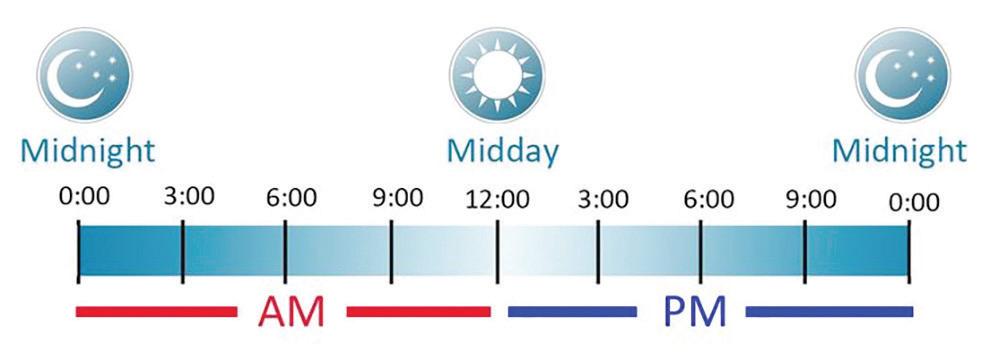
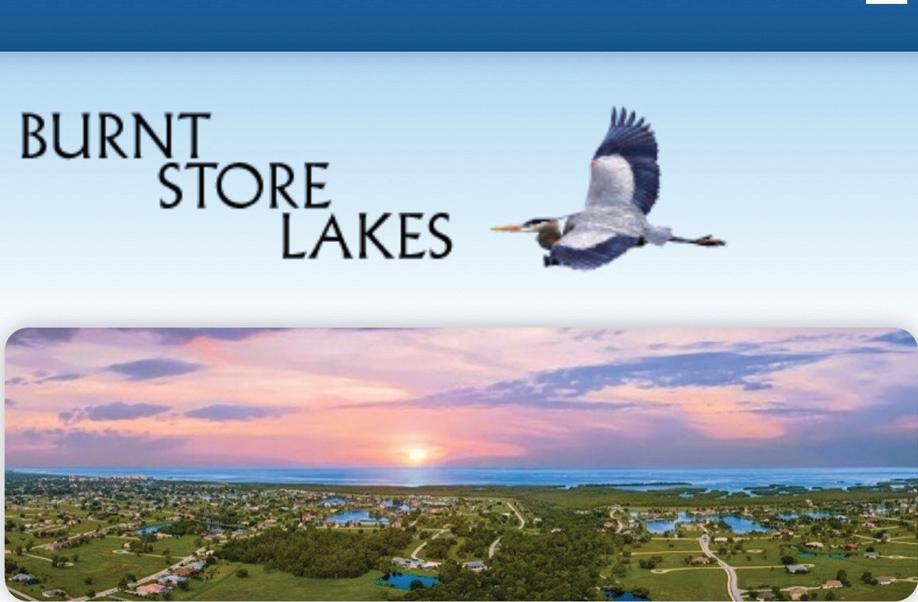




Remember: Update your information if any changes are needed. You are the only one that can update your emails, phone numbers, etc. If you are not receiving your Monday email bulletins, please check your email for accuracy.
• 1,675 members receiving weekly updates • 1,120 website accounts • Privacy and passwords controlled by member • Multiple informational pages
Weekly bulletin updates
Email blasts for instant information sharing
Bulletin listings of past notices
Calendar with R.S.V.P. available for events
Ahhhhhhhhh … Stay safe, little one! Photos by Edie Johnson
Our ever vigilant BSL eagles!
Photo by Curt Johnson
Mama osprey vigilantly protecting her babies.
Photo by Craig Myers, son-inlaw of Chris and Dave Pfefferle
It’s Breeding Season For Pythons
A team of UF/IFAS and USGS scientists are on the search for pythons, employing new tactics and equipment in the next phase of a large-scale python telemetry scout project launched last year.
The goal of the project is to study Burmese python biology and movement patterns as they leverage state-of-the-art radio telemetry technology during the species’ mating and breeding season to locate and remove pythons within a densely aquatic site in the eastern Everglades. It’s a site where there is an abundance of pythons and conditions that make it easy for them to camouflage into the tall sawgrass and slip away into the water within seconds.
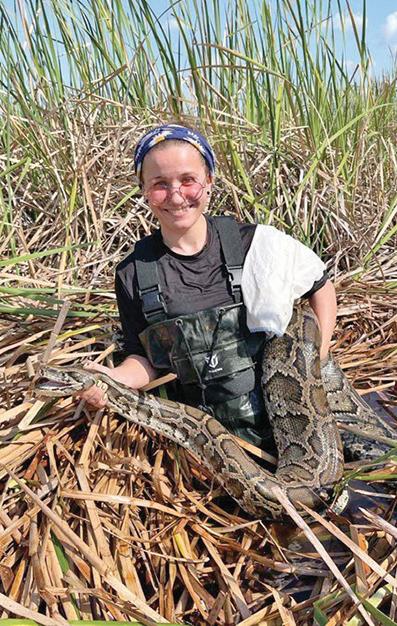
UF/IFAS wildlife biologist
Michelle Bassis holds a large female Burmese python captured near one of their tagged male pythons in the Everglades Francis S. Taylor Wildlife Management Area.
“We have intensified efforts by tracking 14 pythons – up from eight – year-round to increase our understanding of how pythons are moving and using resources in a predominately aquatic habitat within the Everglades,” said Melissa Miller, project lead and research assistant scientist specializing in invasion ecology at the UF/IFAS Fort Lauderdale Research and Education Center. “These data can improve our understanding of their use of space and help us get better at detecting and removing pythons.”
During the breeding season, when multiple male pythons aggregate around a reproductive female vying for a chance to mate, the team can capture and remove any pythons that are attracted to the team’s tagged pythons. These non-tagged pythons are referred to as “associate snakes.”
“We have made significant headway leveraging radio telemetry technology and are looking forward to removing more associate pythons this time around while further studying python movement and behavior in this challenging aquatic environment,” she said.
This year, the team’s python target location complicates and yet enhances the research into python behavior.
Working with Miller is Brandon Welty, a UF/IFAS graduate student at the department of wildlife ecology and conservation (WEC), who has developed innovative techniques to capturing the associate snakes. The study site, encompassed with dense vegetation, is seasonally inundated with water with large expanses of habitat that contain water year-round.
“We only get a brief opportunity to catch associate pythons when they are in these aquatic environments,” said Welty. “If the snake retreats into the water, it becomes almost impossible to locate. Therefore, we occasionally have to exit the airboat to ensure a successful capture.”
The team continues to collaborate with a veterinarian to surgically implant radio transmitters into additional scout pythons, enabling tracking for a comprehensive study of their movement patterns, behavior, habitat utilization and what are known as life history traits.
Life history traits of interest may include data on vitals such as survivorship, timing of reproductive events, clutch size, growth rate and more. These characteristics are inheritable, interconnected and can be influenced by natural selection.
The UF/IFAS and USGS Fort Collins Science Center researchers, along with Danny Haro, a UF/IFAS doctoral student, and Christina Romagosa, an associate professor and project collaborator at WEC in Gainesville, are using data collected during tracking events to inform statistical removal models.
“We anticipate data collected during python tracking will increase the robustness of the removal model, ultimately allowing us to estimate key population parameters for pythons such as detection and abundance,” said Amy Yackel Adams, a USGS research ecologist.
Haro’s research may allow scientists to estimate the number of pythons at this study site, a much-needed endeavor as no tractable estimate of python abundance is known and prevents assessment of removal efforts.
Additionally, staff survey the vicinity during breeding season to identify associate snakes, facilitating the removal of non-tagged pythons from the wild.
“We are learning why there is a knowledge gap concerning how pythons are using aquatic habitats as it is not easy to track
pythons in high water and dense vegetation,” said Miller. “Tracking often requires airboats and aerial flights to locate the snakes.”
While tracking pythons in more aquatic environments is challenging, the team is collecting critical data that will improve scientists’ understanding of how pythons utilize varying landscapes in South Florida.
On tap for this season is incorporating a drone equipped with radiotelemetry tracking software to increase data collection while reducing resources needed to track pythons.
Scientists hope the breeding season will promote additional capture and removal of adult reproductive pythons, particularly large females, from remote interior locations of the Everglades. Adult female pythons can produce over 100 eggs in a clutch, making these females a target for removal.
“Python telemetry scout programs have repeatedly shown to be an effective method for detecting and removing pythons from interior landscapes,” Miller said. “This contrasts with the majority of removal efforts, which are limited to capturing pythons along roadways and levees that can be easily accessed.”
This large-scale python telemetry scout program is led by UF/IFAS scientists in close collaboration with Amy Yackel Adams, Mark Sandfoss, and Amanda Kissel, scientists with the USGS Fort Collins Science Center.
“A benefit to our collaborative study – in addition to increased overall science capacity – is that we get to simultaneously remove pythons during the breeding season while we track tagged pythons year-round to learn more about their ecology,” said Miller. “These efforts will increase our ability to detect and remove pythons and allow us to assess the efficacy of removal efforts.”
Funding for this long-term research project is provided by the South Florida Water Management District (SFWMD) and the Florida Fish and Wildlife Conservation Commission (FWC).
“Controlling invasive species, such as the Burmese python, continues to be a high priority for the FWC,” said McKayla Spencer, a nonnative fish and wildlife program coordinator with FWC. “Supporting this scout snake project not only helps us remove additional pythons across the difficult-to-access, semi-aquatic Everglades landscape, but also increases our knowledge of python behavior and life history – information that can be used to better inform removal efforts in the future.”
How Do Generations Get Their Names?
Naming the generations isn’t always a straightforward process.
We all know what a millennial is. There are stereotypes about what millennials do and do not like, how lazy they may or may not be, and how often they check their social media feeds, all because we’re comfortable using this single term to refer to an entire age demographic of the population. Millennial is a powerful word, and not because of the age range it refers to, but because of just how useful it is—just like Gen X or baby boomer.
There is no single or even typical way that generations historically get their names, because lumping everyone who’s roughly the same age together is a relatively new phenomenon.
Generation Name Years Born
The Lost Generation 1883 to 1900
The Greatest Generation 1901 to 1927
The Silent Generation 1928 to 1945
Baby Boomers 1946 to 1964
Gen X 1965 to 1980
Millennials 1981 to 1996
Gen Z 1997 to 2012
Gen Alpha Early 2010s to 2025

When Did We Start Naming The Generations?
Some social historians link it to Ernest Hemingway’s The Sun Also Rises: The book’s epigraph quotes Gertrude Stein saying, “You are all a lost generation.” (She may not have originated the phrase, though.) More solidly, in 1951 Time ran an article saying “today’s younger generation ... does not make manifestoes, make speeches or carry posters. It has been called the ‘Silent Generation.’” While silent generation was popular in the 1950s to describe the teenage/ young adult crowd born in the early ’20s to early ’30s, it’s now generally 1928 to 1945.
How Did Baby Boomers Get Their Name?
Next were the baby boomers. It all started for them when the Census Bureau started referring to the years after World War II (now 1946 to 1964) as being a “post war baby boom” as births skyrocketed from around 3 million a year to over 4 million a year. As the kids born in this boom started to grow into adults (and thus, consumers), ad agencies found traction by marketing their products to so-called baby boomers. This would be the first, and so far last, time a generation’s “official” name would come from a government organization.
How Did Gen X, Millennials And Gen Z Get Named? Eventually, the baby boomers got older and thus less appealing to companies with something to sell. The ad agencies wanted another catch-all term for the new members of their target age group and began shopping around different terms.
To do this, “they throw stuff at the wall and see what sticks,” Peter Francese, a demographic and consumer markets expert, stated in 2018. “And in some of the meetings, they don’t stick.” That’s how Generation Y, a proto-term for millennials, went in and out of fashion. “Generation Y was too difficult to say, too hard to brand, it didn’t have the cachet, it didn’t have the spark of millennials,” Francese said.
Not sticking is a matter of whether media organizations start using the term, and not just any media organization. “I’m talking about the Associated Press or Reuters—people who are syndicated that produce lots and lots of editorial content that they send out to various organizations,” Francese said. As for determining the dates for millennials, it all came down to demographics, and the adage of comparing apples to apples.
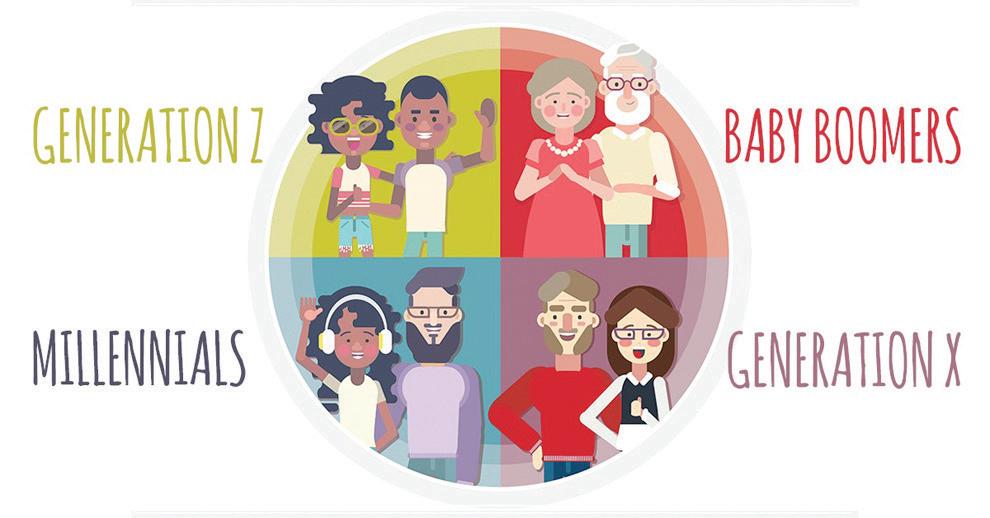
“In 2010, which is when they did the census, baby boomers were all 45 to 64 years old,” Francese explained. “Now, in order to compare millennials to the baby boomers, because they’re the next boom, you have to have what? Twenty years. And so, in 2010, millennials are people between 15 and 34. And then they work back from there to figure out when they were born.”
If it seems like we’re skipping over a generation, that’s because we are. And for the most part, ad agencies did too. In 1991, Douglas Coupland wrote his book Generation X: Tales for an Accelerated Culture about the anonymity he and his contemporaries felt growing up in the shadow of the baby boomers. They were products of a 10- to 12-year downturn in birthrates sandwiched between the boomers and the millennials, and although the term stuck with the general population, the generation was the wrong size to matter much to marketers.
It seems unlikely ad agencies will take such a passive approach again. “The ad agencies have a mission and an imperative to bring to their clients news of what’s going on in the marketplace,” Francese said. “And so, inevitably, they segment the American populations into various groups. The necessity to do that means that they sit around and they come up with names.”
Gen Z, next in line after the millennials, has now acquired consumer value, and will become more powerful in the coming years. As that happens, ad agencies will have a perfectly workshopped label ready to slap on spending reports and style section columns. And once Gen Z has aged out of the marketing sweet spot, Gen Alpha will rise up to start taking their place.
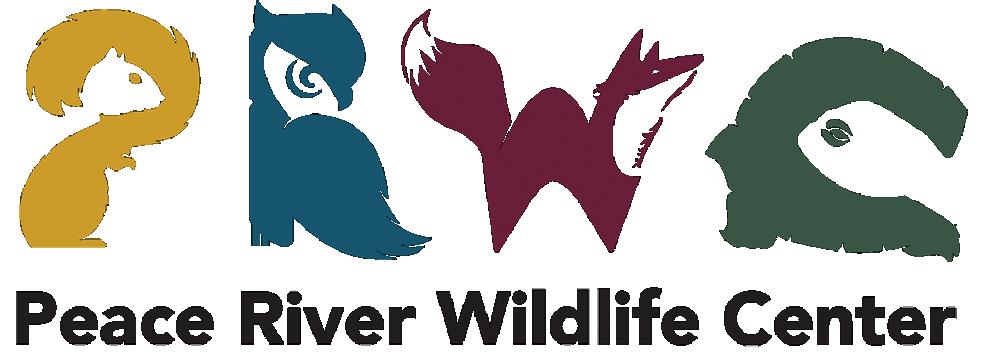
The mission of the Peace River Wildlife Center is to contribute to the survival of native Florida wildlife through rescue, rehabilitation, and education.
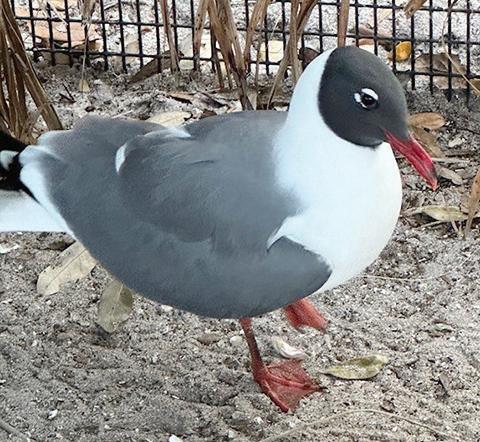
What’s New At PRWC?
♦ During the month of April, PRWC admitted 372 animals. This brings our total intake for 2024 to 913. Our rehabilitation team released 49 animals back into the wild and transferred seven to other wildlife facilities.
♦ Our education center and gift shop at Ponce Park are open to the public for visits and tours from 11 a.m. to 4 p.m., seven days a week. Please do not bring injured wildlife to the Ponce Park location.
♦ PRWC’s wildlife hospital located at 223 Dr. Martin Luther King Jr. Blvd. is open daily from 8 a.m. to 5 p.m. for injured animal care.
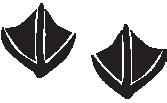




A Rescue Story Just In Time For Mother’s Day!
On April 3, this female Virginia opossum was brought to our hospital for care after being attacked by a dog. Upon initial examination, our rehabilitation team determined that she suffered multiple puncture wounds that required surgical closure, antibiotics and antiinflammatory treatment. They also discovered that she had several joeys in her pouch!
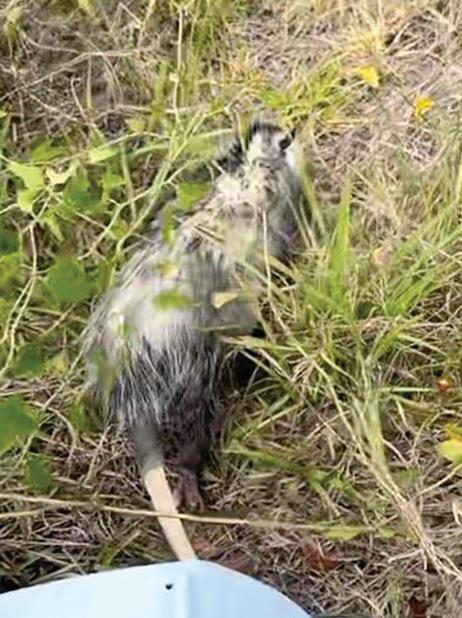
After three weeks of rest and recovery, we were able to release the healthy little momma and her healthy babies back out into the wild to continue growing and living their best wild life!
If you have questions about injured or orphaned wildlife, please call the office at (941) 637-3830 or consult our website at prwildlife.org for after-hours information.
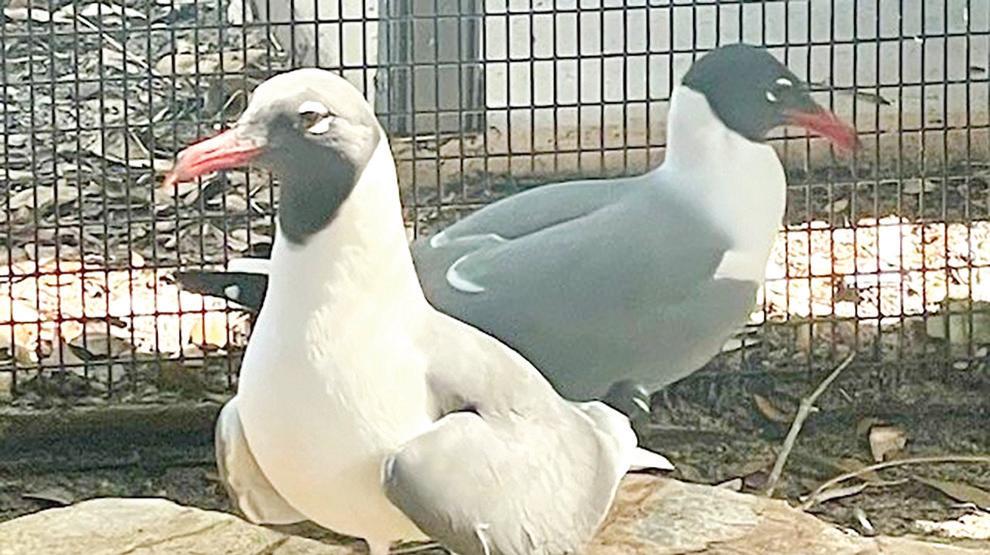
The term “seagull” is a commonly used colloquialism to refer to various species of gulls that are typically found near coastal areas or bodies of water. However, it’s essential to note that “seagull” is not a scientific term but rather a generic term used by people to describe gulls.


Beware Of Alligators!
Inhabitants of Burnt Store Lakes and nearby areas have encountered alligators from time to time.
If you cross paths with an alligator that … a. is in a place considered unacceptable, such as a swimming pool, lanai, garage, etc.,
b. you consider a threat to people, pets, or property,
c. approaches people, or d. doesn’t retreat if approached, … please call the BSL POA office at (941) 639-5881.
Do not feed or harass it. Doing so is dangerous and illegal.
I
At PRWC, we have a pair of laughing gulls. Here are a few fun facts about our residents, Skyra and Happy Feet: Distinctive Call – Laughing gulls earned their name from their unique vocalizations. Their call sounds like laughter, making them one of the few bird species with a vocalization that resembles human laughter. This distinctive sound is often heard in coastal areas where these gulls are commonly found.
Bold Nesting Habits – Laughing gulls are known for their bold nesting habits. They often nest in colonies along sandy beaches, marshes and coastal dunes. These colonies can consist of hundreds or even thousands of pairs of nesting gulls. Despite the seemingly chaotic nature of these colonies, laughing gulls are highly territorial during the breeding season, vigorously defending their nesting sites from intruders.
Opportunistic Feeders – Laughing gulls are opportunistic feeders with a varied diet. While they primarily feed on fish and crustaceans found along the coast, they are also known to scavenge for food in human-populated areas. They are often seen scavenging for scraps at beachside picnics or fishing piers. Their adaptability to different food sources has contributed to their widespread distribution along coastlines throughout North and South America.
Costume Change – A fun fact about the laughing gull’s plumage is its seasonal transformation during the breeding season! While these gulls sport a sleek grayish-brown plumage for most of the year, they undergo a striking makeover during breeding season. Their heads transform into a beautiful shade of chocolate brown, contrasting vividly with their white bodies and giving them a dapper appearance. This transformation not only serves as a visual cue for mating but also adds a delightful splash of color to coastal habitats during the breeding season.
Peace River Wildlife Center 3400 Ponce de Leon Parkway Punta Gorda, FL 33950 Rescue • Rehabilitate • Educate
For further information call (941) 637-3830 or go online at prwc@prwildllife.org.




Visit the Burnt Store Lakes Property Owners Association website for more information.
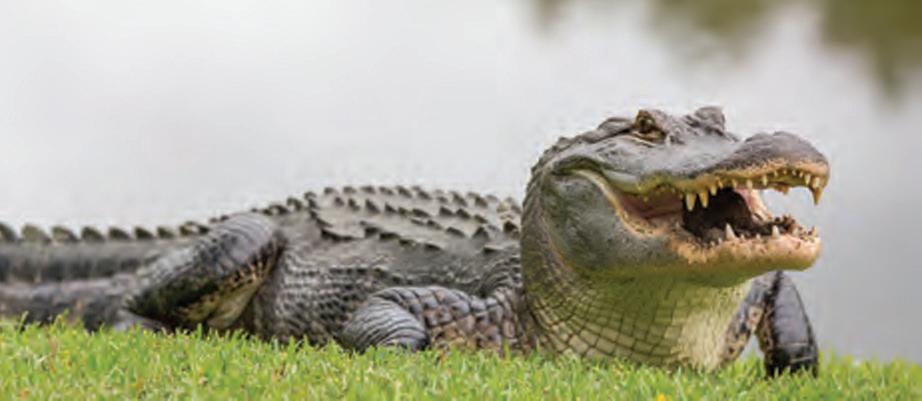
can feel the sand beneath my feet...
“I got neuropathy as a side effect from the chemo that I received 2 years ago in the fall. So it has been about 2 years since I’ve had the neuropathy. When I asked my oncologist what could be done, he told me that I’d have to take gabapentin and just live with it.
We received the ad in the newspaper and my husband says why don’t we see if this guy can help you. We made an appointment, came here and he did. I am so much better it’s unbelievable. I wasn’t able to go to the grocery store without taking a cart, even if I was just picking up some bananas or one or two things. I had to have a cart to help me walk through the store. When we went to the beach we pretty much just stayed in our chairs because I couldn’t get up to go for a walk on the sand. My feet hurt that bad. It was hard to get dressed in the morning. While trying to put my feet into my pant legs my toes wouldn’t cooperate. When I finally came in for my appointment it was close to the end of the time when we were going back up north. I got to know everybody pretty well because I was here
everyday that they were open to get in all of my treatments before we left. I continued everything at home all of the way up through the summertime to where I ran out of stuff, and so now I’m not doing any of that anymore, but they are still so much better it’s unbelievable. I mean I walk the beach, I play golf two or three times a week, I can run in the grocery store without help, and my husband will say I can’t keep up with you anymore. It’s just so much better, it’s wonderful. It’s well worth coming in and having the treatments and taking supplements. You just need to be faithful and do it because it will wake your nerves back up. It’s wonderful. If you don’t try to take care of yourself nobody else is going to.”
Joyce B, Patient - Fort Myers, FL
Dr. Rob Davis, DC is the Bestselling Author of Breaking the Cycle, How to take control of your health when traditional medicine has failed. Call 239-482-8686 to schedule an appointment.


Follow us on social media.
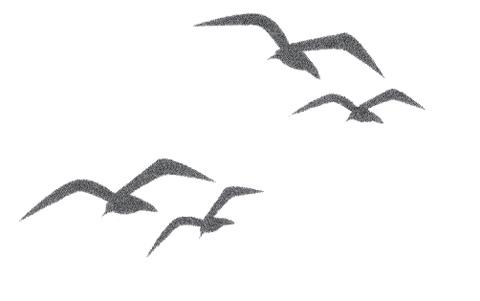

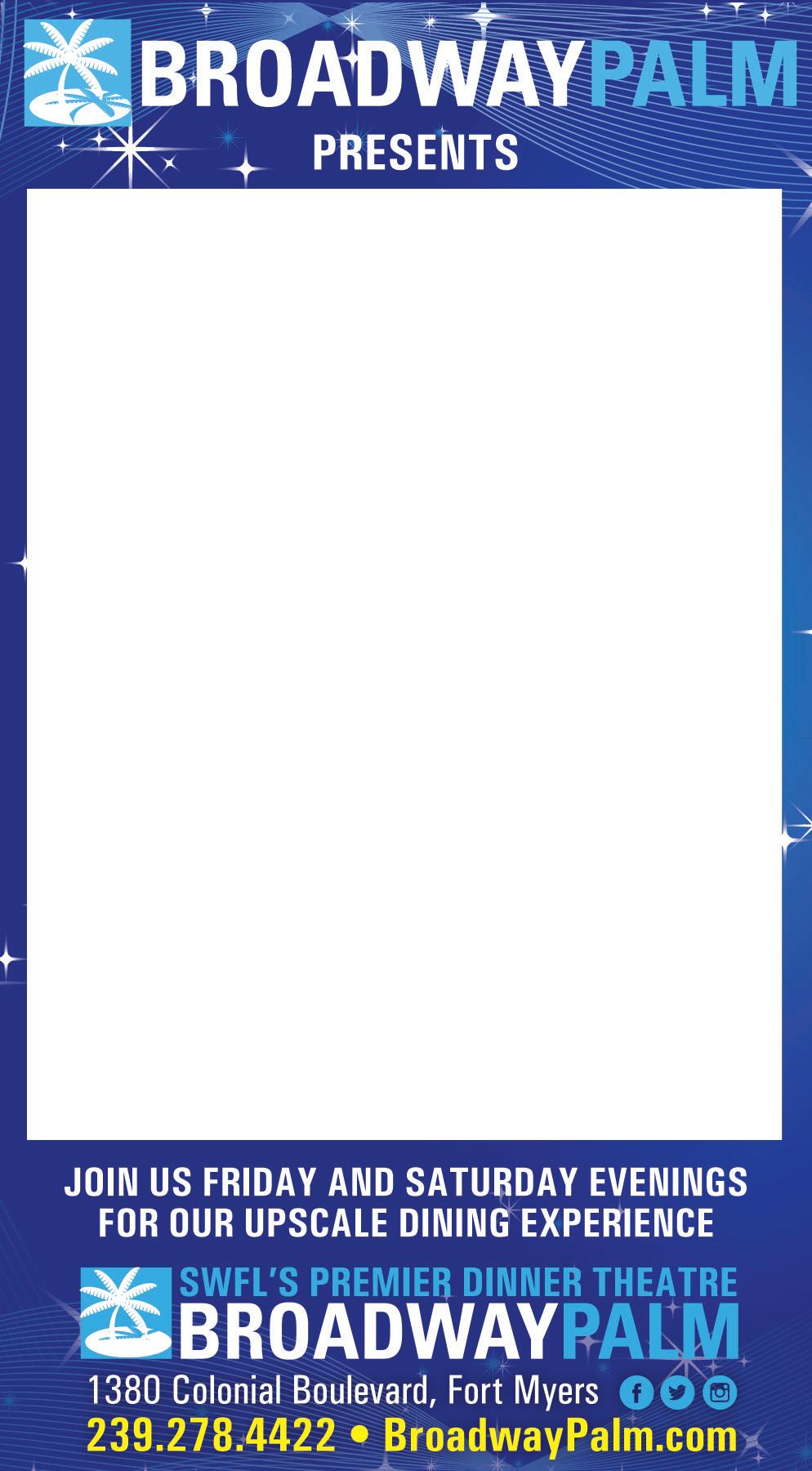
May 31 – June 22
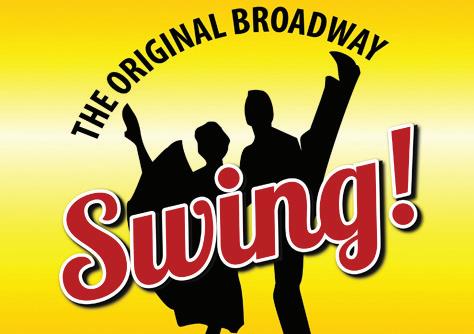
Jump and jive with over 30 songs from the Big Band Era! Swing exploded out of Harlem and shattered cultural and ethnic barriers and now you can relive the dance phenomenon that swept the world. This all singing, all dancing extravaganza features It Don’t Mean a Thing If It Ain’t Got that Swing, Boogie Woogie Bugle Boy, In The Mood, Sing Sing Sing, Stompin’ at the Savoy, Cry Me A River, Bounce Me Brother and more.
June 28 - August 10
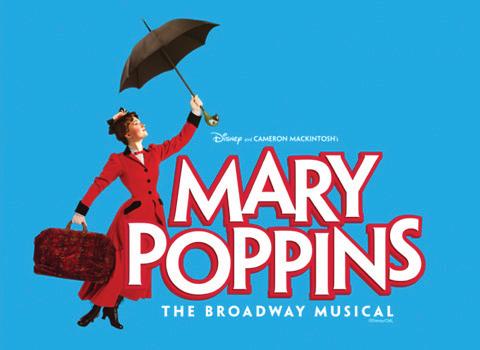
Dates may be subject to change. Everyone’s favorite nanny is back! Young Jane and Michael have sent many a nanny packing before Mary Poppins arrives. Using a combination of magic and common sense, she helps teach the family how to value each other again. Mary Poppins is an enchanting mixture of an irresistible story, breathtaking dance numbers and unforgettable songs such as Chim Chim Cher-ee, A Spoonful of Sugar and Supercalifragilisticexpialidocious.
Gull Fun Facts!
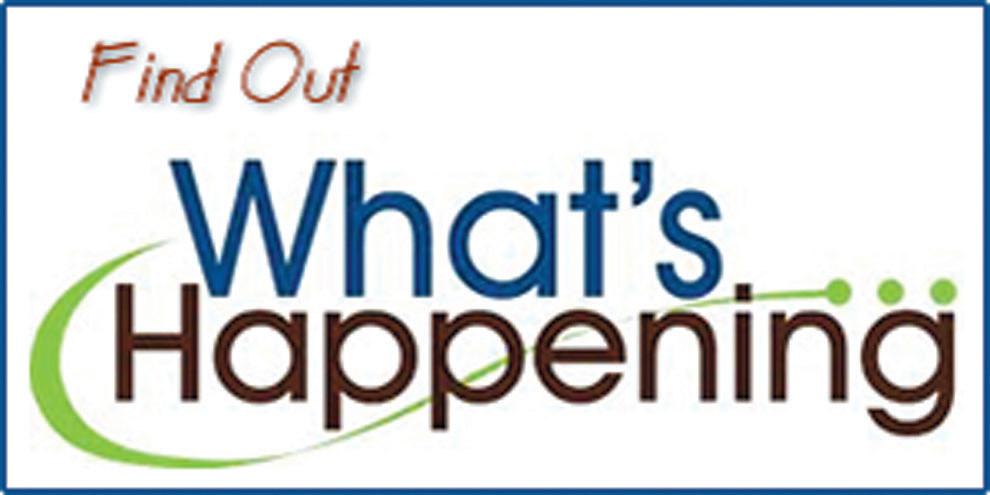
June Events
Zumba
Date: June 4 (and every Tuesday and Friday thereafter)
Time: 8:30 to 9:30 a.m.
Website: http://pgica.org
Event Description: Zumba is a fun, effective dance workout with instructor Gigi Caceda that is a good option for people who enjoy upbeat music and an energetic group exercise environment. Participants may register and pay as they attend. All PGICA classes are open to the public.
Location: Punta Gorda Isles Civic Association (PGICA), 2001 Shreve St., Punta Gorda
Contact Information: Call the PGICA at (941) 637-1655. Fees/Admission: $12 per person, per class
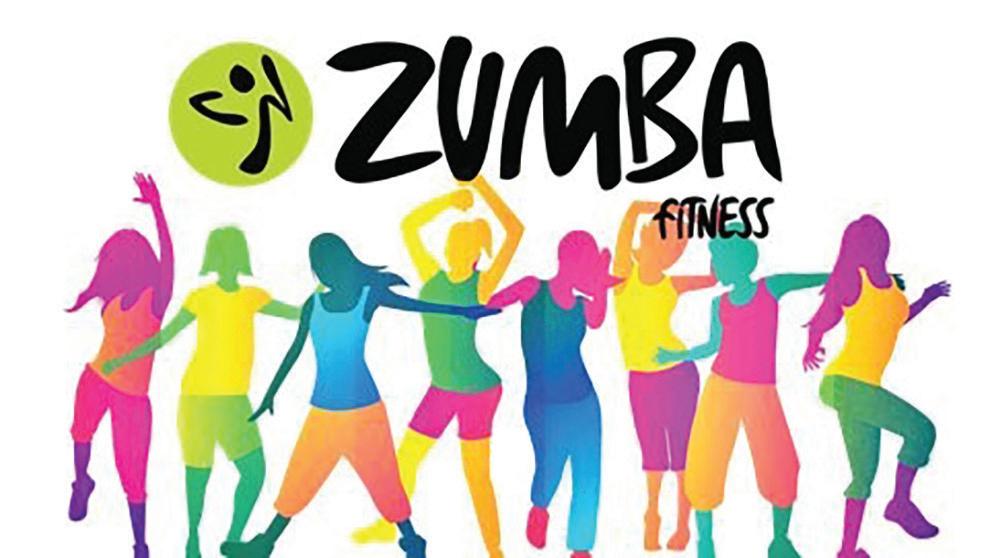
Second Annual Caribbean Heritage Month Celebration
Date: June 17
Time: 1 to 9 p.m.
Website: https://www.facebook.com/ events/388995058283265/
Event Description: Join us as we celebrate Caribbean American Heritage Month and HUD Father’s Day Initiative. There will be live music, games, prizes and vendors. Come out to the park and celebrate with dad while learning the heritage and culture of the islands!
Location: Port Charlotte Beach Park, 4500 Harbor Blvd., Port Charlotte
Contact Information: Sonia Owens at caribjerkfest@gmail.com
Fees/Admission: Free
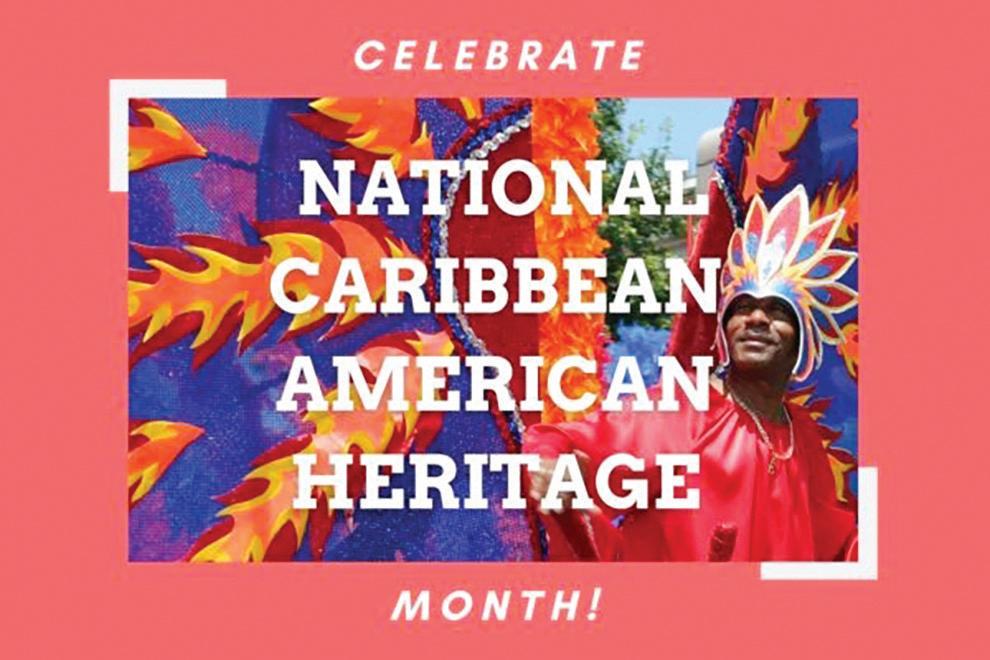
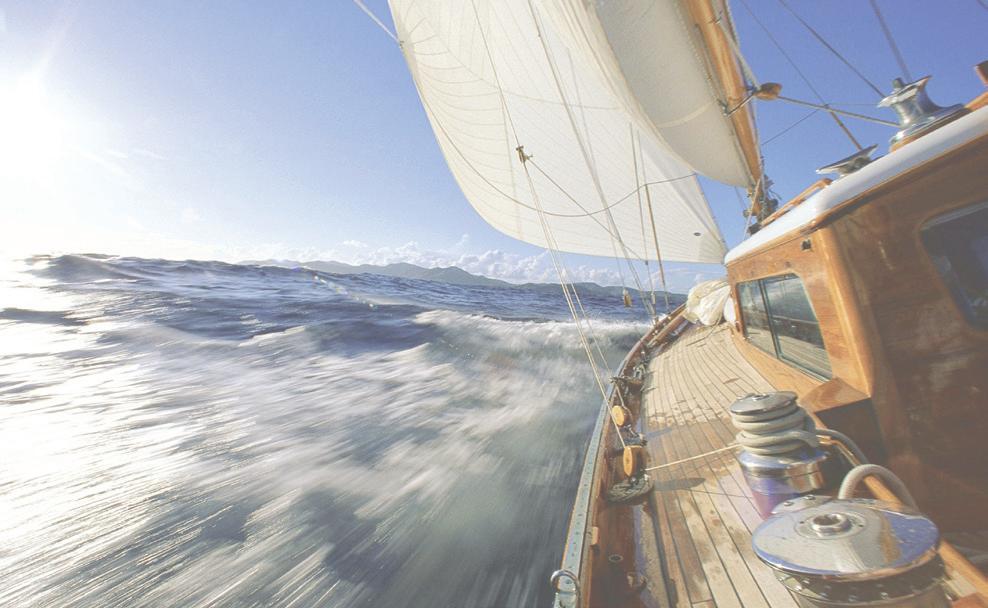
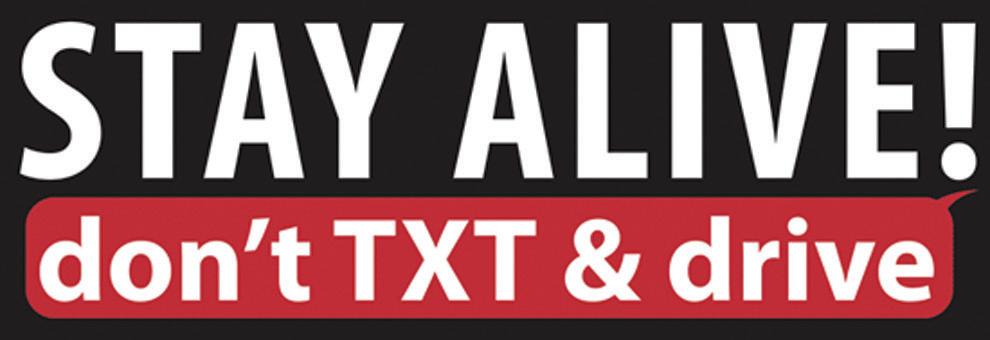

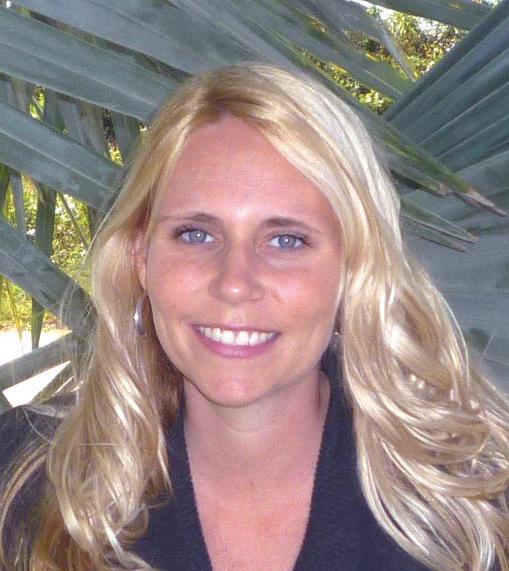
Allison James Estates & Homes
